2023 in Review
No replays 😊
In order finished
In order finished
193 Games
Justifies the crank all on its own, a demonstration of how dexterity can actually be translated into video games beyond flicks of sticks.
Apparently you don't push the Whopper button, you put the Whopper in the Quizno's toaster and it falls out like manure.
In my previous review of Cook, Serve, Delicious?! 3, I closed things out saying that "David Galindo hopefully hasn't peaked with this entry, but if he has it's a magnificent apex." Early showings of Cook Serve Forever made me incredibly anxious that the pinnacle of this microgenre had already reached its logical conclusion, but I'm starting to see that it can't be reduced to hills and valleys.
CSF is inextricable from its CSD/Ore no Ryomi lineage (and the name certainly isn't helping), but the comparison does it, and fans, no favours. We were told time and again that CSF was not a CSD sequel, that it was not following the CSD formula, that we should temper our expectations. With the initial disbelief that, oddly enough, the developers weren't kidding, now somewhat shed, it's clear that CSF has the makings of a great alternate approach to gaming cookery.
Presentation is key for CSF, and the slower, intentional mode of play emphasises that. The name of a recipe is an afterthought, the controls mnemonic-forbidding. All the player can focus on is the dish as it stands, and the two next ingredients. Galindo has spoken previously about the rapid pace and focus on mnemonics meant players didn't look at the food they were making; they simply didn't have time to. PCMRPCMRPCMR, DTCR PFS, and other reductions of recipes to their keypresses rather than their substantive elements has the player's eye locked on the recipe card itself, not its construction. The introduction of holding keypresses further reinforces the pace. Quick accuracy is still valued in CSF, but it is no longer the end all be all of before.
What confuses me most about the game in this state is the purpose of its variable elements. Without those mnemonics or particularities of specific foods, the menu options made are effectively superfluous. While leveling up a specific location will increase the difficulty therein, there is presently no reason outside of that to actually play one location over another. Presumably additional story content and gameplay elements will give these things a purpose, but for now they are an afterthought.
It's far too early to tell where CSF will reign in the pantheon of Ore no Ryouri/Ore no Ryomi/Cook, Serve, Delicious! and I will plainly need to wait for the next entry to get the CSD4 I so crave, but with so much CSD goodness already in my library I can welcome this diverging path. If nothing else, it'll increase my appetite.
CSF is inextricable from its CSD/Ore no Ryomi lineage (and the name certainly isn't helping), but the comparison does it, and fans, no favours. We were told time and again that CSF was not a CSD sequel, that it was not following the CSD formula, that we should temper our expectations. With the initial disbelief that, oddly enough, the developers weren't kidding, now somewhat shed, it's clear that CSF has the makings of a great alternate approach to gaming cookery.
Presentation is key for CSF, and the slower, intentional mode of play emphasises that. The name of a recipe is an afterthought, the controls mnemonic-forbidding. All the player can focus on is the dish as it stands, and the two next ingredients. Galindo has spoken previously about the rapid pace and focus on mnemonics meant players didn't look at the food they were making; they simply didn't have time to. PCMRPCMRPCMR, DTCR PFS, and other reductions of recipes to their keypresses rather than their substantive elements has the player's eye locked on the recipe card itself, not its construction. The introduction of holding keypresses further reinforces the pace. Quick accuracy is still valued in CSF, but it is no longer the end all be all of before.
What confuses me most about the game in this state is the purpose of its variable elements. Without those mnemonics or particularities of specific foods, the menu options made are effectively superfluous. While leveling up a specific location will increase the difficulty therein, there is presently no reason outside of that to actually play one location over another. Presumably additional story content and gameplay elements will give these things a purpose, but for now they are an afterthought.
It's far too early to tell where CSF will reign in the pantheon of Ore no Ryouri/Ore no Ryomi/Cook, Serve, Delicious! and I will plainly need to wait for the next entry to get the CSD4 I so crave, but with so much CSD goodness already in my library I can welcome this diverging path. If nothing else, it'll increase my appetite.
Difficult to put into words how this makes me feel, but it seems a fitting capstone for a year marked by LLMs, themselves harvesters of every shred of available data gathered by algorithms we've been forced to abide by following the hyper-digitisation of life in the wake of COVID.
Near ground zero at Hiroshima is a peace museum, housed in what was once Fukuromachi Elementary School. One concrete wall of the school remained standing after the bombing, charred black from flame. Hibakusha etched messages on the wall, searching for missing friends and family and letting others know they were alive. Set up as one of nineteen aid stations within 500 metres of the detonation, it was a locus for the injured and their networks.
"Please Yuko, tell me where you are, from your mom"
The messages were documented by the Ministry of Education in October 1945, but repairs to the school obfuscated these messages from spring 1946 until 1999. Deteriorating architecture served as an opportunity to see if the messages remained after all this time. Behind plaster and blackboards, the messages indeed remained. For some, it brought closure as an assurance from five decades prior that a relative had lived, fallen ill, or died. The school was reopened as a museum in 2002, the remnants of the past subsumed into the architecture itself, a stark abutment of a grim reality within halls that otherwise seem ordinary. A temporary measure to reach out to others is now made permanent, a concrete symbol of the collective memory of Hiroshima.
The late Jean-Luc Vilmouth unveiled his "Café Little Boy" at the group exhibition "Hiroshima Art Document 2002," held in the Hiroshima Branch of the former Bank of Japan, one of the only buildings untouched by the bombing. Three walls of a room were coated in green chalkboard paint, as were small stools and tables. The space is interrupted by photographs of Little Boy's damage on one wall, and a single unmarred analogue clock on another. Coloured chalk litters the floor, and the five visitors permitted inside at a time are encouraged to leave messages, scrawling over or erasing others if needed. After a short time, they are to leave, and the cycle continues.
Vilmouth's work, now part of the Contemporary collection of the Centre Pompidou, creates a participatory narrative wherein collective memory is continually rewritten, added to, and taken away. Without any degree of permanence, many (including myself) take to writing their innermost secrets on the surfaces, certain that they will disappear. Even if they remain forever, they become anonymised by virtue of how much information there is. Like Fukuromachi's wall, there is no expectation for this history to persist beyond that brief interaction.
Dear Future takes this construction of collective memory and digitises it. The participant is given a camera and has twenty minutes to explore a procedurally-generated world in the wake of collapse. Buildings seem shelled, literal Greco-Roman ruins litter the landscape, scant remnants of the human struggle to survive remain in the form of mattresses and vehicles. A journal documents the rise and fall and revival of an autarchy. Errant ghosts share their brief thoughts when photographed. When the sun sets, the game ends.
SELECT A MEMORY TO PASS ON
ALL OTHER MEMORIES WILL BE LOST TO TIME
Only one of the participant's photographs is allowed to persist. Future participants have access to this (and others') single image, otherwise the entirety of one's participation has no record. All traces are permanently erased. A participant can aid the reconstruction of a wider narrative by imparting a meaningful visual text, or a participant can leave behind an aesthetically pleasing image. A participant can even leave behind a shitty picture of a garbage pile. This is an anonymous act. It gives the participant no benefit to be helpful to others, nor a penalty for refusing progress.
The participant does have one other tool in their arsenal to pass on their heritage. They can leave a note at a location, constructed from pre-defined parts.
They, and the photographs, tell us not of the whereabouts of the participants, those who chronicle the past in the present for the future.
They bring a closure, an assurance that we were once here.
"Please Yuko, tell me where you are, from your mom"
The messages were documented by the Ministry of Education in October 1945, but repairs to the school obfuscated these messages from spring 1946 until 1999. Deteriorating architecture served as an opportunity to see if the messages remained after all this time. Behind plaster and blackboards, the messages indeed remained. For some, it brought closure as an assurance from five decades prior that a relative had lived, fallen ill, or died. The school was reopened as a museum in 2002, the remnants of the past subsumed into the architecture itself, a stark abutment of a grim reality within halls that otherwise seem ordinary. A temporary measure to reach out to others is now made permanent, a concrete symbol of the collective memory of Hiroshima.
The late Jean-Luc Vilmouth unveiled his "Café Little Boy" at the group exhibition "Hiroshima Art Document 2002," held in the Hiroshima Branch of the former Bank of Japan, one of the only buildings untouched by the bombing. Three walls of a room were coated in green chalkboard paint, as were small stools and tables. The space is interrupted by photographs of Little Boy's damage on one wall, and a single unmarred analogue clock on another. Coloured chalk litters the floor, and the five visitors permitted inside at a time are encouraged to leave messages, scrawling over or erasing others if needed. After a short time, they are to leave, and the cycle continues.
Vilmouth's work, now part of the Contemporary collection of the Centre Pompidou, creates a participatory narrative wherein collective memory is continually rewritten, added to, and taken away. Without any degree of permanence, many (including myself) take to writing their innermost secrets on the surfaces, certain that they will disappear. Even if they remain forever, they become anonymised by virtue of how much information there is. Like Fukuromachi's wall, there is no expectation for this history to persist beyond that brief interaction.
Dear Future takes this construction of collective memory and digitises it. The participant is given a camera and has twenty minutes to explore a procedurally-generated world in the wake of collapse. Buildings seem shelled, literal Greco-Roman ruins litter the landscape, scant remnants of the human struggle to survive remain in the form of mattresses and vehicles. A journal documents the rise and fall and revival of an autarchy. Errant ghosts share their brief thoughts when photographed. When the sun sets, the game ends.
SELECT A MEMORY TO PASS ON
ALL OTHER MEMORIES WILL BE LOST TO TIME
Only one of the participant's photographs is allowed to persist. Future participants have access to this (and others') single image, otherwise the entirety of one's participation has no record. All traces are permanently erased. A participant can aid the reconstruction of a wider narrative by imparting a meaningful visual text, or a participant can leave behind an aesthetically pleasing image. A participant can even leave behind a shitty picture of a garbage pile. This is an anonymous act. It gives the participant no benefit to be helpful to others, nor a penalty for refusing progress.
The participant does have one other tool in their arsenal to pass on their heritage. They can leave a note at a location, constructed from pre-defined parts.
They, and the photographs, tell us not of the whereabouts of the participants, those who chronicle the past in the present for the future.
They bring a closure, an assurance that we were once here.
Plague Inc made into a clicker dressed in transfemme (but also autogynephilic (not that autogynephilia is a thing)) clothing. Femdemic, like gender and sexuality, is complicated. It is composed of too many independent truths to label it as wholly affirming or fetishistic. It instills profound sadness, regret, and frustration, not only with itself, but with the real world. It makes me feel horrible, happy, hollow. It confuses me. Since Femdemic labels itself as both trans-affirming and kink-affirming, it's only fair to look at it under two distinct lenses.
As a gender-affirming work (though the Liberation mode), Femdemic has you effectively playing the role of HRT under the guise of a microbe. You feminise your subject so they can spread to all the transwomen on the planet. Changes made to the host are subtle, slow, and limited -- there is no facial feminisation, no height changes, minimal alteration to the genitalia, some breast growth, some fat redistribution. In this capacity, Femdemic is shockingly honest with the limitations of non-invasive gender care on the AMAB body, in a way that is usually reserved for downvoted Reddit threads and doomposting on /lgbt/. Perhaps due to the primary focus on trans women, all sexual encounters only occur with other trans women, which is probably fine as sex is not the primary focus of Liberation, but it seems reductive in part of how trans women might express their sexuality. There is no engagement with cis women, nor cis men. As I'm not a trans woman, only a transfeminine NB, I can't speak to how positive of an experience this actually is, but at least it doesn't delve into full-blown fetishistic territory.
Compliance mode is full-blown fetishistic territory. Breasts balloon outward, the penis shrinks to the point it become a vagina, heights dwindle, the increased libido of the host has them in perpetual ahegao before they either perform oral sex on a man, or get fucked. If there was any doubt as to what the player actually is, here it become clear; you are an STD. The host can only have penetrative sex once they have a vagina. This PIV-centrism reads as a doubling down on the ignorance of how sex occurs; is the suggestion that heterosexual men have no interest in a pre-op trans woman? That trans women can't have sex with cis women (or other trans women for that matter)? That trans women, through their heterosexuality, in some way shed their yaoi hole? Is the host even a trans woman? Compliance doesn't render this particularly crystalline, but the need to dominate the host's immune system and irrevocably alter their identity to diminish the perceived negative effects of feminisation, and the emphasis on converting biological men leaves Liberation in a weird psychosexual gray area that's a mix of sissy hypnosis, gooning, forced feminisation, autogynephilia, transvestism, and transmedicalism.
Putting these affirming halves aside, Femdemic is simply one of the laziest applications of the Plague Inc. and clicker formulas I've seen in a while. The loop is rote, you always feminise a host, spread, reset your progress for some light bonuses, and do it again. None of the management involved in Plague Inc. rears its head. And you click to barely speed up an arduous process that puts even lengthy eroge VNs to shame. There isn't even the smallest joy of seeing number go up, just that of maxing your producers, closing the game, and coming back so you can see the boobs become more seeable or watch one of two animations of IMVU characters participating in what might be called sex.
As a gender-affirming work (though the Liberation mode), Femdemic has you effectively playing the role of HRT under the guise of a microbe. You feminise your subject so they can spread to all the transwomen on the planet. Changes made to the host are subtle, slow, and limited -- there is no facial feminisation, no height changes, minimal alteration to the genitalia, some breast growth, some fat redistribution. In this capacity, Femdemic is shockingly honest with the limitations of non-invasive gender care on the AMAB body, in a way that is usually reserved for downvoted Reddit threads and doomposting on /lgbt/. Perhaps due to the primary focus on trans women, all sexual encounters only occur with other trans women, which is probably fine as sex is not the primary focus of Liberation, but it seems reductive in part of how trans women might express their sexuality. There is no engagement with cis women, nor cis men. As I'm not a trans woman, only a transfeminine NB, I can't speak to how positive of an experience this actually is, but at least it doesn't delve into full-blown fetishistic territory.
Compliance mode is full-blown fetishistic territory. Breasts balloon outward, the penis shrinks to the point it become a vagina, heights dwindle, the increased libido of the host has them in perpetual ahegao before they either perform oral sex on a man, or get fucked. If there was any doubt as to what the player actually is, here it become clear; you are an STD. The host can only have penetrative sex once they have a vagina. This PIV-centrism reads as a doubling down on the ignorance of how sex occurs; is the suggestion that heterosexual men have no interest in a pre-op trans woman? That trans women can't have sex with cis women (or other trans women for that matter)? That trans women, through their heterosexuality, in some way shed their yaoi hole? Is the host even a trans woman? Compliance doesn't render this particularly crystalline, but the need to dominate the host's immune system and irrevocably alter their identity to diminish the perceived negative effects of feminisation, and the emphasis on converting biological men leaves Liberation in a weird psychosexual gray area that's a mix of sissy hypnosis, gooning, forced feminisation, autogynephilia, transvestism, and transmedicalism.
Putting these affirming halves aside, Femdemic is simply one of the laziest applications of the Plague Inc. and clicker formulas I've seen in a while. The loop is rote, you always feminise a host, spread, reset your progress for some light bonuses, and do it again. None of the management involved in Plague Inc. rears its head. And you click to barely speed up an arduous process that puts even lengthy eroge VNs to shame. There isn't even the smallest joy of seeing number go up, just that of maxing your producers, closing the game, and coming back so you can see the boobs become more seeable or watch one of two animations of IMVU characters participating in what might be called sex.
Weaker than Moose Life but I'm jazzed about a new Gridrunner coming with the new collection.
Coco big boobs seeable
take me back
This review is a sister piece to my review of 177. I recommend reading that first.
CW: Sexual assault. The four-letter ‘R-word’ is invoked repeatedly without censoring or obfuscation.
WHEN YOU CATCH A GIRL YOU MUST FIND RIGHT TIMING FOR MAXIMUM RESULT WHICH WILL BE SHOWN ON LOVE METER ACTION OF LOVE MAKING IS BY PUSH BUTTON. BEST TIMING WILL PRODUCE MOST ECSTATIC RESULTS ON FEMALE METER.
Lover Boy is functionally unremarkable, seemingly of as much import as Min Corp.’s Gumbo or Toaplan’s Pipi & Bibi’s. Unlike those games, however, Lover Boy is mired in obscurity, controversy, and a historiography that crumbles under scrutiny.
The gameplay is in line with other maze games of the early 1980s. The Lover Boy chases Lisa, Rosemarie, Linda, and Maria through a labyrinth while police officers and dogs track him. There are item pickups for points, and bottles of perfume which incense Lover Boy, boosting his speed dramatically. All the while, a rendition of the nursery rhyme しょうじょうじのたぬきばやし 「 Shoujouji no Tanukibayashi」 plays merrily. Getting near the girls causes them to run away while yelling HELP, touching them starts your digital assault. Like 177, the player tries to get their victim’s pleasure meter to top out before Lover Boy climaxes. Though 177 used directional inputs, Lover Boy simply has you tapping the button at a steady rhythm. Filling the LADY LOVE to the heart at the top has the women elate Oh~. Climaxing before she can has her yelling NO! and escaping, Lover Boy needing to chase her down again.
Though less explicitly stated in Lover Boy as compared to 177, we see the same rape myth being perpetuated, that of rape becoming a consensual sexual act should the victim reach orgasm. Since Lover Boy is an arcade game, designed to munch the yen of the aroused, there is no good ending to speak of here. The cycle continues in perpetuity until Lover Boy is put behind bars for good. This might suggest an inevitability to the rapist being caught and punished accordingly in due time, but the lives system inadvertently paints a picture wherein a sexual criminal is released and allowed to repeat their crimes with minimal repercussion. Lest we forget the harrowing injustice presented in 177’s manual, “even if he was prosecuted then, he would not be charged with a crime.” Capture is thus an inconvenience, nothing more.
In trying to find out more about Lover Boy, I came to find out it was cause for debate in the Deutscher Bundestag a year after its release. On March 26, 1984, parliamentary spokespersons for Die Grünen (The Greens) Marieluise Beck, Petra Kelly, and Otto Schily brought to the attention of the federal government the installation of light-gun games and Lover Boy in an arcade in Soest. Both were cited as potential violations of Section 131 of the Strafgesetzbuch (Criminal Code), stating therein the illegality of representations which glorified violence. Increasingly realistic depictions of humans as targets for violence, both physical and sexual, necessitated a re-evaluation of existing legislation which made no such effort to criminalise imagery which ‘violated human dignity.’
Sixteen days later, the Federal Government answered the concerns of Die Grünen. The government had come to understand Lover Boy was installed in locations besides Soest, with the understanding that the PCB had been presented by an Italian importer in 1983 at Internationalen Fachmesse für Unterhaltungs- und Warenautomaten (The International Trade Fair for Amusement and Vending Machines) in Frankfurt. The specific board in Soest which drew initial concerns was sourced from a distributor in Dortmund. A March 1984 arcade game trade journal advertised Lover Boy as suitable for children, and thirty-two machines ended up being sold in North Rhine-Westphalia alone, and it came to be understood that Automaten-Selbstkontrolle (ASK) had been presented with incomplete information by which to rate its content; the content was egregious enough to exclude Lover Boy from any rating, leading to the existing machines being purchased and destroyed. A draft law was proposed to the Bundestag, stipulating that games of a violent sort must be prohibited from public areas frequented by children, and postulating that perhaps violent games should be banned wholesale in Germany.
A year later, in April 1985, Section 131 of the Strafgeseztbuch was amended to prohibit representations of violence, rather than just those which glorified it. Additionally, depictions of the ‘violation of human dignity’ were criminalised as well. The ASK became a permanent institution, officially regulating an industry that had, up to that point, been self-regulated.
The ban in Germany is easy to trace, but time and again, it is stated in other reviews and retrospectives that Lover Boy was banned globally outside of Japan with zero evidence offered to support that claim. Searches for “Lover Boy” and “Global Corporation Tokyo” in the United States Congressional Record, Historical Debates of the Parliament of Canada, British Cabinet Papers, CommonLii, Italian Senate record, New York Times, Globe & Mail, all turned up nothing. The German Wikipedia page also makes no mention of Lover Boy being banned anywhere outside of Germany.
Outside of the Bundestag record, some of the only other concrete information about Lover Boy is that it was brought to market by the same company that made 1983’s JoinEm, a non-erotic maze game, released under the name Global Corporation. The pinout and DIP switch documentation included with the Lover Boy PCB had Lover Boy handwritten on them. Weirding the situation further, a seeming bootleg of Lover Boy was released in Spain under the name Triki Triki, changing the developer name to DDT Enterprise, editing the copyright date to 1993.-nicht-jugendfrei-und-nicht-in-Mame/page10) The trail ends there.
If I were to posit a guess, the majority of the inaccurate claims about Lover Boy stem from a single GameFAQs review by defunct user ‘TheSAMMIES’. They claim, erroneously, that Lover Boy:
- Deals with aspects of rape beyond the penetrative act
- Has been banned globally
- Has better gameplay than 177
- Is slang for a man who lures underage women into prostitution (the term is only used in that manner in Dutch)
- Depicts only underage women
- Displays female genitalia
- Has only one maze
- Is of dark comedic value
None of that is true whatsoever. Their spurious falsehoods are on display in their review of 177 as well, claiming falsely:
- 177 is the police code for rape (it is simply the section of the Japanese Criminal Code which criminalises rape)
- RapeLay tackles rape more tactfully
- 177’s rape scenes show plant life and the night sky (they actually occur in a black void)
- Has controls in its rape scenes for getting onto Kotoe, penetrating her, building up sexual stamina (you actually just gyrate, the graphics barely animating)
- That 177 received a remake called 171 wherein Hideo is replaced by a squid monster, Kotoe by a maid (I have found no evidence of such a game existing)
Whether these ideas are being born purely from their mind, some misinterpretation of the realities of history, or whatever else, this individual seems to have irreparably tarnished the known history of Lover Boy, leading to prolonged repetition of the same incorrect claims. If there were any evidence to back up those ideas, wouldn’t they have shown themselves? Does it matter? Nobody cares about this game, nobody knows about it, can we fault the few who have documented it for their inaccuracies?
Yes, because it makes determining the truth all the harder. Yes, because it puts the onus of honestly on those who come after the fact. Yes, because just as these games are harmful in their depictions, speaking of them falsely is just as much of a disservice to history.
CW: Sexual assault. The four-letter ‘R-word’ is invoked repeatedly without censoring or obfuscation.
WHEN YOU CATCH A GIRL YOU MUST FIND RIGHT TIMING FOR MAXIMUM RESULT WHICH WILL BE SHOWN ON LOVE METER ACTION OF LOVE MAKING IS BY PUSH BUTTON. BEST TIMING WILL PRODUCE MOST ECSTATIC RESULTS ON FEMALE METER.
Lover Boy is functionally unremarkable, seemingly of as much import as Min Corp.’s Gumbo or Toaplan’s Pipi & Bibi’s. Unlike those games, however, Lover Boy is mired in obscurity, controversy, and a historiography that crumbles under scrutiny.
The gameplay is in line with other maze games of the early 1980s. The Lover Boy chases Lisa, Rosemarie, Linda, and Maria through a labyrinth while police officers and dogs track him. There are item pickups for points, and bottles of perfume which incense Lover Boy, boosting his speed dramatically. All the while, a rendition of the nursery rhyme しょうじょうじのたぬきばやし 「 Shoujouji no Tanukibayashi」 plays merrily. Getting near the girls causes them to run away while yelling HELP, touching them starts your digital assault. Like 177, the player tries to get their victim’s pleasure meter to top out before Lover Boy climaxes. Though 177 used directional inputs, Lover Boy simply has you tapping the button at a steady rhythm. Filling the LADY LOVE to the heart at the top has the women elate Oh~. Climaxing before she can has her yelling NO! and escaping, Lover Boy needing to chase her down again.
Though less explicitly stated in Lover Boy as compared to 177, we see the same rape myth being perpetuated, that of rape becoming a consensual sexual act should the victim reach orgasm. Since Lover Boy is an arcade game, designed to munch the yen of the aroused, there is no good ending to speak of here. The cycle continues in perpetuity until Lover Boy is put behind bars for good. This might suggest an inevitability to the rapist being caught and punished accordingly in due time, but the lives system inadvertently paints a picture wherein a sexual criminal is released and allowed to repeat their crimes with minimal repercussion. Lest we forget the harrowing injustice presented in 177’s manual, “even if he was prosecuted then, he would not be charged with a crime.” Capture is thus an inconvenience, nothing more.
In trying to find out more about Lover Boy, I came to find out it was cause for debate in the Deutscher Bundestag a year after its release. On March 26, 1984, parliamentary spokespersons for Die Grünen (The Greens) Marieluise Beck, Petra Kelly, and Otto Schily brought to the attention of the federal government the installation of light-gun games and Lover Boy in an arcade in Soest. Both were cited as potential violations of Section 131 of the Strafgesetzbuch (Criminal Code), stating therein the illegality of representations which glorified violence. Increasingly realistic depictions of humans as targets for violence, both physical and sexual, necessitated a re-evaluation of existing legislation which made no such effort to criminalise imagery which ‘violated human dignity.’
Sixteen days later, the Federal Government answered the concerns of Die Grünen. The government had come to understand Lover Boy was installed in locations besides Soest, with the understanding that the PCB had been presented by an Italian importer in 1983 at Internationalen Fachmesse für Unterhaltungs- und Warenautomaten (The International Trade Fair for Amusement and Vending Machines) in Frankfurt. The specific board in Soest which drew initial concerns was sourced from a distributor in Dortmund. A March 1984 arcade game trade journal advertised Lover Boy as suitable for children, and thirty-two machines ended up being sold in North Rhine-Westphalia alone, and it came to be understood that Automaten-Selbstkontrolle (ASK) had been presented with incomplete information by which to rate its content; the content was egregious enough to exclude Lover Boy from any rating, leading to the existing machines being purchased and destroyed. A draft law was proposed to the Bundestag, stipulating that games of a violent sort must be prohibited from public areas frequented by children, and postulating that perhaps violent games should be banned wholesale in Germany.
A year later, in April 1985, Section 131 of the Strafgeseztbuch was amended to prohibit representations of violence, rather than just those which glorified it. Additionally, depictions of the ‘violation of human dignity’ were criminalised as well. The ASK became a permanent institution, officially regulating an industry that had, up to that point, been self-regulated.
The ban in Germany is easy to trace, but time and again, it is stated in other reviews and retrospectives that Lover Boy was banned globally outside of Japan with zero evidence offered to support that claim. Searches for “Lover Boy” and “Global Corporation Tokyo” in the United States Congressional Record, Historical Debates of the Parliament of Canada, British Cabinet Papers, CommonLii, Italian Senate record, New York Times, Globe & Mail, all turned up nothing. The German Wikipedia page also makes no mention of Lover Boy being banned anywhere outside of Germany.
Outside of the Bundestag record, some of the only other concrete information about Lover Boy is that it was brought to market by the same company that made 1983’s JoinEm, a non-erotic maze game, released under the name Global Corporation. The pinout and DIP switch documentation included with the Lover Boy PCB had Lover Boy handwritten on them. Weirding the situation further, a seeming bootleg of Lover Boy was released in Spain under the name Triki Triki, changing the developer name to DDT Enterprise, editing the copyright date to 1993.-nicht-jugendfrei-und-nicht-in-Mame/page10) The trail ends there.
If I were to posit a guess, the majority of the inaccurate claims about Lover Boy stem from a single GameFAQs review by defunct user ‘TheSAMMIES’. They claim, erroneously, that Lover Boy:
- Deals with aspects of rape beyond the penetrative act
- Has been banned globally
- Has better gameplay than 177
- Is slang for a man who lures underage women into prostitution (the term is only used in that manner in Dutch)
- Depicts only underage women
- Displays female genitalia
- Has only one maze
- Is of dark comedic value
None of that is true whatsoever. Their spurious falsehoods are on display in their review of 177 as well, claiming falsely:
- 177 is the police code for rape (it is simply the section of the Japanese Criminal Code which criminalises rape)
- RapeLay tackles rape more tactfully
- 177’s rape scenes show plant life and the night sky (they actually occur in a black void)
- Has controls in its rape scenes for getting onto Kotoe, penetrating her, building up sexual stamina (you actually just gyrate, the graphics barely animating)
- That 177 received a remake called 171 wherein Hideo is replaced by a squid monster, Kotoe by a maid (I have found no evidence of such a game existing)
Whether these ideas are being born purely from their mind, some misinterpretation of the realities of history, or whatever else, this individual seems to have irreparably tarnished the known history of Lover Boy, leading to prolonged repetition of the same incorrect claims. If there were any evidence to back up those ideas, wouldn’t they have shown themselves? Does it matter? Nobody cares about this game, nobody knows about it, can we fault the few who have documented it for their inaccuracies?
Yes, because it makes determining the truth all the harder. Yes, because it puts the onus of honestly on those who come after the fact. Yes, because just as these games are harmful in their depictions, speaking of them falsely is just as much of a disservice to history.
It's just my life.
Far and away the most egregiously misguided attempt at myth-making in games history. This isn't the worst game ever. It's not the weirdest game ever. It is not the 'first American produced visual novel.' Limited Run Games seems content to simply upend truth and provenance to push a valueless narrative. The 'so bad it's good' shtick serves only to lessen the importance of early multimedia CD-ROM software, and drenching it in WordArt and clip art imparts the notion that this digital heritage was low class, low brow, low effort, and altogether primitive.
This repackaging of an overlong workplace sexual harassment/rape joke is altogether uncomfortable at best. Further problematising this, accompanying merch is resplendent with Edward J. Fasulo's bare chest despite him seemingly wanting nothing to do with the project. We've got industry veterans and games historians talking up the importance of digital detritus alongside YouTubers and LRG employees, the latter making the former less credible. We've got a novelisation by Twitter 'comedian' Mike Drucker. We've got skate decks and body pillows and more heaps of plastic garbage for video game 'collectors' to shove on a dusty shelf next to their four colour variants of Jay and Silent Bob Mall Brawl on NES, cum-encrusted Shantae statue, and countless other bits of mass-produced waste that belongs in a landfill. Utterly shameful how we engage with the past.
---{Graphics}---
☑ You forget what reality is
☐ Beautiful
☐ Good
☐ Decent
☐ Bad
☐ Don‘t look too long at it
☐ MS-DOS
---{Gameplay}---
☑ Very good
☐ Good
☐ It‘s just gameplay
☐ Mehh
☐ Watch paint dry instead
☐ Just don't
---{Audio}---
☐ Eargasm
☐ Very good
☐ Good
☑ Not too bad
☐ Bad
☐ I'm now deaf
---{Audience}---
☑ Kids
☑ Teens
☐ Adults
☑ All
---{PC Requirements}---
☐ Check if you can run paint
☐ Potato
☐ Decent
☐ Fast
☐ Rich boi
☑ Ask NASA if they have a spare computer
---{Difficulity}---
☐ Just press 'W'
☐ Easy
☐ Significant brain usage
☐ Easy to learn / Hard to master
☐ Difficult
☑ Dark Souls
---{Grind}---
☐ Nothing to grind
☐ Only if u care about leaderboards/ranks
☐ Isnt necessary to progress
☐ Average grind level
☐ Too much grind
☑ You‘ll need a second life for grinding
---{Story}---
☐ No Story
☐ Some lore
☐ Average
☐ Good
☐ Lovely
☑ It‘ll replace your life
---{Game Time}---
☐ Long enough for a cup of coffee
☐ Short
☐ Average
☐ Long
☑ To infinity and beyond
---{Price}---
☑ It’s free!
☐ Worth the price
☐ If it's on sale
☐ If u have some spare money left
☐ Not recommended
☐ You could also just burn your money
---{Bugs}---
☐ Never heard of
☐ Minor bugs
☐ Can get annoying
☐ ARK: Survival Evolved
☑ Cyberpunk 2077
---{?/10}---
☐1
☐2
☐3
☐4
☐5
☐6
☐7
☐8
☐9
☑10
Operates wonderfully as the first Tetris Guideline title released in Japan. The Wonderswan's accommodation of a portrait layout means a greater play area relative to the screen, and thus a greater focus on the game itself. Compared to its contemporary, the GBA release of Tetris Worlds, it is leagues better in nearly every way. The particulars of the X and Y button pads makes every move feel deliberate when compared to the relatively inaccurate GBA D-pad. Even on Level 15, I felt in control of the field in a manner that felt incongruous with my expectations of the early 2000's handheld Tetris experience. Furthermore, Tetris on Wonderswan makes each square visibly distinct, as opposed to the featureless pieces of Tetris Worlds on GBA. That implementation of a functionally identical game come across as cheap and tawdry in nearly every way. The hold and next pieces therein seem an afterthought, here they are apparent and intentional. Even the soundtrack, bound to such an inferior chip on Wonderswan, is leagues better than the quiet frumpy GBA's meagre output.
Tetris on Wonderswan is exactly what I look for in a handheld Tetris experience, and it is a shame it never reached our shores.
None hit wonders.
Amazing how much fun you can have with a single text field!
I Uncovered the First Eroge Ever and it’s THIS?? (LOST MEDIA!!!) 😱
(Available on my blog with photo accompaniment)
One year ago, after weeks of intensive research, I put together a culmination of available knowledge on dB-Soft’s notorious, under-documented 177. My intent was for this to be the first of many projects detailing the cultural role and history of key eroge works. My research into 177 bore fruit for seemingly countless historical forays into the likes of Lover Boy, Lolita Syndrome, Night Life, and Emmy. Information on these titles was somewhat scant to be sure, but there was enough to construct a narrative. Lover Boy was knocked out in a couple days, and in revisiting my list of potential topics I was intrigued by a title I’d popped on there without much thought:
Yakyūken (Hudson Soft, n.d.)
Supposedly this predated Koei’s Night Life and even On-Line Systems’ Softporn Adventure by quite some margin, though the specific date was up for debate if not entirely lost. If I were to talk about PSK’s Lolita: Yakyūken at some point, surely it would make more sense to tackle its progenitor first. This presented a few problems. First, there is not exactly a plethora of information about this primitive eroge. Second, it seems to have left no impact. Third, there was no way to play it. For all I knew, Yakyūken did not even exist in the first place, and if it had, nobody had bothered to back it up. VGDensetsu had collated some basic information and screenshots,[1] and BEEP had acquired a copy in 2015,[2] but these only served to tease me, increasing my appetite for forbidden fruit. The type-in version printed in MZ-700 Joyful Pack only had one page of the code documented online, and a search of previous Yahoo! Auctions listings for either cassette came up empty. But MZ-700 Joyful Pack seemed to turn up frequently, that seemed the best course of action.
Unwilling to wait for it to be listed on Yahoo! Auctions again, I turned to Kosho, Japan’s secondhand bookstore search engine. Finding one listing, without a picture, I took a gamble on a copy of what appeared to be the right issue of MZ-700 Joyful Pack, and patiently waited. A month later, it arrived at my door, and while it looked different from the one I had seen online, I excitedly opened it up, flipping through each page for my treasure. Were I looking into computerised Shogi, Go, and Mahjong, I would have found it. Every type-in was a trainer, solver, or some other supplementary program for these three Japanese board games. The trail turned ice cold. Distraught, I resigned myself to searching Yahoo! Auctions weekly for the correct MZ-700 Joyful Pack or a Yakyūken cassette. After another month, the same tape I had seen on BEEP popped up; HuPack #2 for Sharp MZ-700.
Forty years old. Dirty. Discoloured. Untested. I set up my bid in a panic, shaking with anticipation for the next four days, pleading nobody would top my already high bid. I won, it reached my proxy after a week, it was on its way. Quaking as a leaf in a stiff wind, it arrived. Quickly it dawned on me my tape deck had been broken for years, but some kind folks at Gaming Alexandria thankfully offered to dump and scan it on my behalf.[3] After many months of searching, this seemingly lost progenitor to the entirety of erotic gaming was available again. Nobody particularly cared, but I had the first piece of the puzzle I needed. Tape back in hand, I imported a copy of Miyamoto Naoya’s seminal Introduction to Cultural Studies: Adult Games, the first edition of Bishōjo Game Maniax, Sansai Books’ 35 Years of Bishōjo Game History, and Maeda Hiroshi’s Our Bishōjo Game Chronicle, the only books I could source that made mention of Yakyūken.
Only problem was, what exactly is Yakyūken. Why are we stripping while playing rock paper scissors in the first place?
On the Origins of Rock Paper Scissors
Though now effectively ubiquitous across a multitude of cultures, rock paper scissors type hand games (ken) have enjoyed an astounding popularity in Japan since the eighteenth century. Brought to Japan from China sometime before 1743, the original form of Japanese ken is referred to today as kazu-ken, Nagasaki-ken, and hon-ken (“original ken”). Players sat opposite one another, showed any number of fingers on their right hand, and called out a guess as to what the sum of the fingers would be. The left hand counted one’s wins, and the loser of a set was made to drink a cup of sake. With its specific hand movements, Chinese mode of calling numbers, and embedded rules of drinking, kazu-ken flourished in the red-light district of Yoshiwara.[4] Its exoticism in the time of sakoku and Japanese Sinophilia no doubt contributed to its proliferation. However, the theatrics and, as Japanologist Sepp Linhart argues, ritualistic rules made the game difficult to penetrate for those not in the know, a far cry from the rock paper scissors we know today.[5]
Subsequent iterations of ken remedied the complications through the familiar sansukumi-ken (“ken of the three which cower one before the other”) format.[6] A wins over B, B over C, C over A. In its first iteration, mushi-ken, the frog (represented by the thumb) defeated the slug (the pinkie) which won over the snake (index finger). Itself another cultural import from China, mushi-ken gradually acquired a reputation as a game explicitly for children[7], but what won over it culturally was kitsune-ken, later Touhachi-ken. The kitsune trumps the head of the village which wins over the hunter which kills the kitsune. This two-handed ken was more popular among adults in and out of districts like Yoshiwara, particularly as the basis for libations or stripping.[8] The accompanying song, dance, and act of playing kitsune-ken as a strip-game were known as chonkina, the loser doffing an article of clothing until one was bare. Clearly intended for adult entertainment, chonkina nonetheless made itself known to children in time, as recalled in Shibuzawa Seika’s Asakusakko:
"Two children, standing opposite to each other, after having put together the palms of their hands right and left as well as alternately, finally make one of the postures of fox, hunter or village headman to decide a winner. The loser has to put off a piece of what he is wearing every time, until one of them is stark naked. To see the little children on cold winter days trembling, because one after another piece of cloth was stripped them off is a strange scene which can no longer be seen today."[9]
As the nation opened to foreigners again, chonkina became well known among foreigners, and due to the bad reputation it was bestowing to Japan, it was outlawed from September 1894 onward.[10]
Children’s mushi-ken would go on to evolve into jan-ken, the rock paper scissors with which we are familiar, but the specifics of when and how are unclear and unimportant for our purposes. Jan-ken was the preeminent ken by the end of the Meiji period, and ken on the whole was relegated to the realm of children. However, as a game intimately familiar to nearly all Japanese beyond childhood, the simple, fast-paced trichotomy of jan-ken, alongside its association with punishment systems like drink and stripping afforded jan-ken staying power beyond childhood.[11] It is a game which effectively boils down to luck, allowing for decision-making that, if nothing else, is understood to be fair.
Putting the Yakyū in Yakyūken
It’s October, 1924 in Takamatsu. To break in the new ground at Yashima, nearby industrial companies and technical schools are holding a baseball tournament. In a crushing defeat of 0-8, the team from Iyo Railway (later Iyotetsu) was humiliated by the Kosho Club, composed of students from Kagawa Prefectural Takamatsu Commercial School (now Kagawa Prefectural Takamatsu Commercial High School). [12] Later that night, the teams held a get-together at a nearby ryokan, putting on enkai-gei (“party tricks”). Manager of the Iyotetsu team and senryū poet, Goken Maeda, devised an arrangement and choreography of the 1878 nagauta piece “Genroku Hanami Odori.” The Iyotetsu team danced to shamisen in their uniforms to the delight of those in attendance. This first iteration of what would become Yakyūken (literally “baseball fist”) was based on the Japanese rock paper scissors variant kitsune-ken, but by 1947 it came to reflect now common variant jan-ken.[13] The Yakyūken performance was repeated at a consolation party in Iyotetsu’s hometown of Matsuyama, quickly gaining popularity therein and throughout Japan as the team performed it while on tour.[14]
The camaraderie instilled in audiences by the Iyotetsu team’s dance, and its spread as enkai-gei, led to many localised instances of this new form of jan-ken being performed.[15] The specifics of how prevalent it became are impossible to discern, but what is known is that Yakyūken, as with the earlier kazu-ken and kitsune-ken, became another diversion used as an excuse to imbibe and to disrobe.
野球するならこういう具合にしやしゃんせ ~ソラ しやしゃんせ~
投げたら こう打って 打ったなら こう受けて
ランナーになったらエッサッサ ~アウト・セーフヨヨイノヨイ~
It’s 1954. Contemporary Ryūkōka artists Ichiro Wakahara and Terukiku of King Records,[16] Yukie Satoshi and Kubo Takakura of Nippon Columbia,[17] and Harumi Aoki of Victor Japan[18] have all released 78 rpm singles with their own takes on Yakyūken. This musical multiple discovery of a still relatively local song brought into question where it had actually originated, with a photograph of the Matsuyama consolation party cementing Goken Maeda as its creator.[19] With this, Maeda’s original, non-chonkina song and dance came to be understood as honke Yakyūken, the orthodox iteration, the way it was meant to be. As the dance spread, alcohol flowed and clothes were shed. In an attempt to preserve the sanctity of Maeda’s phenomenon, fellow poet Tomita Tanuki established an iemoto system for honke Yakyūken around 1966, formalising its lyrical structure and attempting to preserve Yakyūken as a way, not unlike sumo. As iemoto, Tanuki in effect declared himself to be the highest authority on honke Yakyūken — it did not and would not matter how Yakyūken was actually enjoyed colloquially, only what the iemoto approved of constituted the real thing. At the same time, the city of Matsuyama introduced a new taiko performance — the Iyo-no-Matsuyama Tsuzumi Odori — for that year’s Matsuyama Odori festival. While it was popular, it lacked regionalism, and so in 1970, it was replaced with Yakyūken Odori.[20] It wasn’t just local flavour, however, as the year prior Yakyūken became a national phenomenon for more unsavoury reasons.
Birth of a Sensation: Yakyūken Breaks Into the Mainstream, or Tits Out for TV
Just as in the United States, the 1960s in Japan were marked by an increase in individuals’ buying power and the proliferation of television. Whereas the prior decade relegated television sets to the homes of the wealthy or in street-side display windows, by 1970, 90% of Japanese households owned at least one television set.[21] The penetration of the entertainment sphere into the domestic realm led to a berth of variety and comedy shows, all emphasising the joys of laughter. This proliferation rose concerns among cultural critics in the 1960s, with fears that the often lowbrow, thoughtless humour which frequently lampooned violence and sexuality were unsuited to the home, particularly where children might be watching.[22] Furthermore, such programming was becoming increasingly rote and prescriptive in its approach, thereby lessening its effect with each broadcast, making this new mode of entertainment lascivious and boring. In breaking free of an ever rigid mould, Japanese television’s saviour came in the form of Hagimoto Kinichi and Sakagami Jirō’s comedy duo Konto 55-gō. Pronounced as “konto go-jyuu go gō,” the name’s syllabic tempo, evocation of go-go dancing, and abstruse referencing of baseball player Oh Sadaharu’s 55th homerun of the 1964 season all brought about a rapidity and contemporary sensibility fitting of the pair’s comedic stylings.[23]
From their television debut in 1967, Konto 55-gō demonstrated a dynamic physicality in stark contrast to similar acts, often moving so fast that cameras could not keep up with them, the laughter of the audience sometimes being the only indicator of a punchline’s delivery.[24] While a breath of fresh air, cultural critics lambasted this seeming over-correction as yet again inappropriate for home audiences. On the other hand, audiences adored the duo’s comedy, with renowned Buddhist nun, translator of Genji Monogatari into modern Japanese, and self-described Konto 55-gō fan Jakucho Setouchi (then known as Harumi Setouchi) saying Kinichi and Jirō made her “laugh so much that [her] stomach ached."[25]
This focus on unpredictability, shattering of expectations and conventions, and need to perpetually one-up themselves, Konto 55-gō chased and reinforced the proliferation of what Allan Kaprow described as ‘Happening.’ Originally coined in 1959 in reference to art-related events in which the artist took on theatrical directions and modes of expression, Happenings flourished throughout the United States through the 1950s and 1960s, spreading globally but predominantly in Germany and Japan.[26] In the context of the Japanese television industry, ‘Happening’ was co-opted to refer to anything unscripted — quite the opposite from its intent as a label for deliberate performance — after the early 1968 program Kijima Norio Happuningu Sho (“Kijima Norio’s Happening Show”).[27] To be clear, Happenings in this context were still partially staged just as art Happenings were, but the intent from producers was that Happenings would go off the rails by virtue of a lack of scripting and the co-operation and involvement of audience participants. As other shows and producers chased this spontaneity and carried in the wake of Konto 55-gō’s pioneering transgressions, the stakes became higher and content needed to become more compelling, more novel, more edgy, more risque.
The most critical apex of Happening for our purposes came in 1969 on Konto 55-gō no Urabangumi o Buttobase (“Konto 55-gō Blow away the competition”). It was here that Yakyūken was introduced as a segment of the program, with Kinichi and Jirō facing off against numerous women, each stripping an article of clothing upon a loss. Removed articles were then auctioned to raise funds for children orphaned by traffic accidents.[28] The segment was an enormous hit among adults and children, some critics praising this nakedness as incredibly real, the pinnacle of the Happening.[29] At the same time, just as with all of Konto 55-gō’s antics, many loathed this primetime strip tease wholly inappropriate for children to view, some citing it as a siege against one of the sole bulwarks left against Japan’s growing moral decline, the home.[30] Scorn came not only from without, however, but within as well. Kinichi would later go on to say Konto 55-gō no Urabangumi o Buttobase was his most disliked programme he ever worked on, in no small part due to the Yakyūken segment which brought viewers in not for the comedy of the duo, but for the titillation and obscenity of the Yakyūken act itself.[31] Furthermore, in 2005, Kinichi visited Matsuyama to apologise personally to fourth honke Yakyūken iemoto Tsuyoshitoshi Sawada for misrepresenting Yakyūken. Despite this resentment from Kinichi and some critics, Yakyūken reinvigorated jan-ken into a game with stakes, with merriment, with rules everyone was already familiar with, with a catchy song and dance, that brought the Happening into the real world.
Through Konto 55-gō’s work, Yakyūken presented the same problem that chonkina had in the previous century — a breaking of the boundaries between adult entertainment and the recreation of children. This was no longer bound to the district of Asakusa, but the whole of Japan. Further still, the growing popularity of Yakyūken and its association with Konto 55-gō spread the popular conception of the dance originating as a strip performance, rendering the attempts of Tanuki’s iemoto system to preserve the sanctity of Maeda’s original work increasingly ineffective. The iemoto system only had merit when the associated act could be considered a tradition worth preserving such as tea ceremony or calligraphy. With Yakyūken compromising the cultural zeitgeist as a strip game, it became difficult to consider it a valuable cultural commodity. While it is possible this was the greater underlying reason for Matsuyama’s introduction of Yakyūken Odori to the Matsuyama Odori festival in 1970, it cannot be stated as certainty. What was certain was that Yakyūken was here to stay as a television staple, at least for a moment.
Yakyūken remained a part of Konto 55-gō no Urabangumi o Buttobase through to the end of 1969, afterwards being spun-off into its own program Konto 55-gō no Yakyūken!! From November 26, 1969, thirty minutes of strip rock-paper-scissors littered the airwaves every Wednesday at 9PM until the program was discontinued in April 1970.[32] Yakyūken would not be broadcast on Nippon TV for another two decades, returning on New Year’s Eve, 1993 as part of Supa Denpa Bazaru Toshikoshi Janbo Dosokai (“Super Radio Bazaar New Year’s Jumbo Alumni Reunion”). Though no longer televised in the interim, Yakyūken remained in the cultural zeitgeist as a strip game. While impossible to discern at what point Yakyūken became a mainstay of Japanese pornographic production, it has become ubiquitous — a cursory search of Japanese pornographic clip site eroterest.net gives over 34,000 results for Yakyūken. What is certain is that Yakyūken similarly became not just a mainstay of Japanese erotic video games, but the foundation of the entire industry.
In Which I Finally Tell You About the Video Game Yakyūken by Hudson Soft
With 500,000 yen in starting capital, brothers Yūji and Hiroshi Kudō founded Hudson Co., Ltd. in Toyohira-ku, Sapporo on May 18, 1973. Named after the duo’s favourite class of train, the 4-6-4 Hudson, Yūji and Hiroshi sold fine art photographs of locomotives. In September, the brothers opened a dedicated amateur radio shop, CQ Hudson, which stood at 3-7-26, Hiragishi, Toyohira-ku into the new millennium.[33] After travelling to the US shortly thereafter to market their wares, Yūji saw personal computers on general sale for the first time, inspiring him to bring home a PolyMorphic Systems Poly-88 to Japan and learn to program, taking on two million yen in credit card debt to finance the purchase.[34] Well before the personal computer revolution hit Japan, The Kudō brothers were pioneers. The shops of Akihabara bore no fruit for them, necessitating the Poly-88 import. By 1975, the Kudōs had fully branched out into personal computer products, turning type-in programs into pre-packaged cassette tape releases for the sake of convenience, and becoming early adopters of NEC’s 1976 TK-80 and Sharp’s MZ-80 line of computers.[35] The Kudō brothers also began to start writing their own programs around this time under the development team name Miso Ramen Group.
Hudson released at least thirty-seven games for the MZ-80 line, available occasionally as type-ins in magazines like Micom or in books like MZ-80B活用研究. There was a little bit of everything in Miso Ramen Group’s offerings, from the Maze War-esque Ramen Maze 3D to Othello to Operation Escape, wherein the player had to sneak out of class not unlike Konami’s 1984 Beatles-laden Mikie.[36] In the summer of 1979, Hudson was approached by a computer manufacturer with a proposal to sell their software by mail order with an advertisement in Micom for July 1979.[37] The ads were a success, with the Kudōs recounting later that deposits at the bank took upwards of thirty minutes because tellers thought they might be criminals.[38] Yakyūken’s existence in this initial advertisement makes it plain that the game was developed prior to mid-1979, and the ad was laid bare in a 1996 television documentary special by NHK. Yet Yakyūken’s status as the first commercial erotic game seems to have fallen to the wayside.
The game is incredibly simple, as one might expect from a preliminary type-in program from the late 1970s.[39] The player decides how many articles of clothing they wish themselves to have, not dissimilar from a lives system, and is then introduced to their opponent, Megumi.
わたしめぐみよろしくね。(“I’m Megumi, nice to meet you.”)
A few bars of the Yakyūken song beep languidly from the piezoelectric speaker with a bold OUT!! SAFE!! ヨヨイノヨイ covering the screen. The player chooses グ (rock), チョキ (scissors), or パ (paper). In the event of a tie, the process repeats. Should the player lose, an article of clothing is theoretically removed with no visual indication. Should they win, Megumi is declared ‘out’ and her avatar removes an article of clothing. Shirt, skirt, bra, panties. An eyebrow is cocked when her outer attire comes off, the other joining in twain when her bra comes loose. When she loses her panties, Megumi covers her crotch and shrieks "キャー!!はやくあっちへいって!!" (“Kyaa! Quickly, get out!!”) Game end. The original MZ-80 release was monochromatic, but the later MZ-700 versions were in colour, used to minimal effect. It really is as simple as that.
Who’s on first?
Koei’s first entry in their Strawberry Porno series, Night Life, dominates much of the historical record as the earliest erotic game, particularly in the West. Hardcore Gaming 101, Matthew T. Jones, Wikipedia, and MobyGames (among others) authoritatively claim it to be the first, and on occasion one might see PSK’s Lolita Yakyūken cited in its place, but both works released in 1982, the same year as Custer’s Revenge.[40] ASCII Corporation’s history of the NEC PC-8801 show similar family trees wherein Night Life is the root of all Japanese eroge, its own ancestor being On-Line Systems’ 1981 Softporn Adventure.[41] So too does Pasokon Super Special PC Game 80s Chronicle.[42] When Yakyūken is mentioned by these sources, it is as a possibility, something which might be true but lacks veracity, yet the evidence is plain.
Perhaps Yakyūken was simply too early, releasing before heavy-hitter platforms like the NEC PC-88 or Fujitsu FM-7. The MZ-80 line’s flagship was the MZ-80K, released in 1978. It was available only as an assembly kit, which, coupled with its high retail price of ¥198,000, left it in the realm of the enthusiast and academic (particularly engineering students).[43] While games were blatantly possible on the platform, they were far from the focus, limiting the audience for Hudson’s games, particularly Yakyūken, dramatically. Further still, it was sold primarily through mail order, advertised in niche magazines without pictures. Hudson got paid, and quite well at that, but orders came for a litany of their products. Without knowing this was an explicit game, the prospect of playing digital jan-ken must have paled in comparison to Othello or Hudson’s more arcade-style offerings. By the time it came to the next generation on 1982’s MZ-700, the floodgates had already been opened, and platforms capable of graphics dominated the eroge space.
Perhaps Night Life and Lolita Yakyūken take the historiographical spotlight because they lack the primitiveness of Yakyūken. There is no denying that Yakyūken lacks the graphical fidelity of its descendants. Bound by the 80 column by 50 row display of the MZ-80K, space is limited, colour an impossibility, and everything is comprised of text characters as the hardware could not display graphics. The Japanese character ROM bears no curvilinear shapes apart from circles.[44] The hand signs are malformed, and though your opponent, doesn’t look bad per se, her rectangular body’s attempt at an hourglass figure is not exactly stunning. As games writer Yoshiki Osawa described it in the 2000 book Bisyoujyo Game Maniax, [sic] the visuals lack gender specificity, and exhibit a crudeness that cannot even be called ASCII art.[45] Compared to the full colour illustrations of PSK’s Lolita Yakyūken or even the silhouettes of Night Life, Yakyūken comes up short.
Perhaps Yakyūken was too outdated to catch on without some additional gimmick such as lolicon artwork. The original dance craze had occurred a quarter-century earlier, and it had been barred from television for nearly a decade. By the admission of MZ-700 Joyful Pack, Yakyūken was unlikely to resonate with those who did not grow up in the postwar period. A craze to be sure, but a craze for a generation past, one which had little interest in computing. The type-in’s accompanying text even had to make explicit that Yakyūken had virtually nothing to do with baseball, despite its name, as well as the fact this was a game of chonkina.
What these comparisons ignore is that stunning the world was not necessarily Yakyūken’s purpose. Though sold commercially, projects in its vein from Hudson were as much at home on cassette as they were printed as type-ins. By having their code laid entirely bare, type-ins meant hobbyists dabbling in a brand new technology could visually see and alter the program. The type-in’s purpose was to demonstrate what a computer could do. A user could change Megumi-chan into a man, increase her bust size, style her hair. Perhaps they could do away with jan-ken and replace its symbols with those from Touhachi-ken. Why not increase the number of options available for some digital Rock Paper Scissors Lizard Spock? Just as type-ins are used to teach today, so were they then — deliberately open ecosystems in which to learn. Night Life and Lolita Yakyūken were as walled gardens, the magic unable to be discerned.
In Which I Admit This is All Pedantry and Ultimately Does Not Matter
The fact of the matter is that this is all pedantry and ultimately it does not matter. While monumental firsts are readily recorded, the more niche the subject matter, the more abstruse the truth of a first becomes. Any history student can tell you this after a course on historiography and the historical method. The fact of the matter is that what comes first is arbitrary, determined by fallible, biased humans trying to further an argument.
The search for historical firsts has overtaken much of contemporary historical scholarship, and the problem with this is that there is invariably always an earlier example, and the argument of something as coming earlier is increasingly valueless. Certainly there will always come a true first, but how can we know it is certain with an always imperfect historical record? Does it matter if something came first if it was too ahead of its time? Would we be better off as historians focusing more on moments of critical mass as others in adjacent fields do, such as Marek Zvelebil did in his research on agricultural innovations in the archaeological record?[46] Who is to say. What I can say for sure is that I sincerely hope Yakyūken is not the first commercial erotic game. I hope to be disproved at some point in the future. I hope that in trying to set the record straight in this one instance, it can be set straight in another. I hope the drive for better histories never ends, and that at some point we can dwell less on firsts, and more on more critical narratives in games history, cultural history, human history.
__________________________
[1] Video Games Densetsu, “Yakyūken / 野球拳, Probably the First Erotic Video Game Ever Released.,” Tumblr, November 18, 2016, https://videogamesdensetsu.tumblr.com/post/153336334460/yaky%C5%ABken-%E9%87%8E%E7%90%83%E6%8B%B3-probably-the-first-erotic-video.
[2] “【宅配買取】MZ-700用野球拳(ハドソン)を宮城県仙台市のお客様よりお譲りいただきました|BEEP,” BEEP, April 16, 2019, http://www.beep-shop.com/blog/5921/.
[3] “Hudson Soft - HuPack #2 (Featuring Rowdy-Ball and Yakyūken)(Scans + GameRip) : Hudson Soft,” Internet Archive, July 1, 2023, https://archive.org/details/Hudson-soft-hupack-2.
[4] Sepp Linhart, From Kendô to Jan-Ken: The Deterioration of a Game from Exoticism into Ordinariness (SUNY Press, 1998), 322-323.
[5] Sepp Linhart, “Rituality in the Ken Game,” Ceremony and Ritual in Japan, (2013): 39. https://doi.org/10.4324/9780203429549-10.
[6] Linhart, “Rituality in the Ken Game,” 39.
[7] Kitamura Nobuyo. 1933. Kiyu shoran. 2 vols. Tokyo: Seikokan shoten, quoted in Linhart, From Kendô to Jan-Ken, 325.
[8] Stewart Culin, Korean Games with Notes on the Corresponding Games of China and Japan (Philadelphia: University of Pennsylvania, 1895), 46-47.
[9] Shibuzawa Seika. 1966. Asakusakko. Tokyo: Zoukeisha, quoted in Linhart, From Kendô to Jan-Ken, 334-335.
[10] Hironori Takahashi, “Japanese fist games” (in Japanese): Osaka University of Commerce Amusement Industry Research Institute (2014): 203.
[11] Thomas Crump, Japanese Numbers Game (London: Routledge, 1992). 146.
[12] “本当は脱がない「野球拳」 松山発祥、90年の歴史,” 日本経済新聞, June 29, 2014, https://www.nikkei.com/article/DGXNASFG230DO_V20C14A6BC8000/. Accounts seem to differ on the final score, with some sources claiming it was a 0-6 defeat, others 0-8. As 0-8 is cited by the fourth Iemoto of Yakyūken, that is the number I have decided to use.
[13] Takakashi, “Japanese fist games,” 204-205.
[14] Takakashi, “Japanese fist games,” 204-205.
[15] Takao Ohashi, “A Trademark Registration for ‘野球拳おどり’ (Yakyu-Ken Dance ) - パークス法律事務所,” パークス法律事務所 -, December 9, 2021, https://pax.law/topics/blog/1242/.
[16] 野球けん 若原一郎・照菊, YouTube (YouTube, 2023), https://www.youtube.com/watch?v=H58uhkoQrbo.
[17] 久保幸江・高倉敏 野球拳, YouTube (YouTube, 2015), https://www.youtube.com/watch?v=4Xdfh4dBWeM.
[18] 靑木 はるみ ♪野球けん♪ 1954年 78rpm Record. Columbia Model No G ー 241 Phonograph, YouTube (YouTube, 2022), https://www.youtube.com/watch?v=ycCAK69hc7w.
[19] “本家 野球拳,” GMOとくとくBB|運営実績20年以上のおトクなプロバイダー, accessed October 2, 2023, http://shikoku.me/iyo-matsuri/raijin/honkeyakyuuken/history/index.html.
[20] “松山野球拳おどりのあゆみ,” 松山野球拳おどり 公式ホームページ, accessed October 2, 2023, https://baseball-dance.com/about/story/.
[21] David Humphrey, “Shattering the Everyday: Konto 55-gō and the Teleivision Comedy of the Late 60s” Japan Studies Association Journal 15, no. 1 (2017): 24.
[22] Humphrey, “Shattering the Everyday,” 24.
[23] Humphrey, “Shattering the Everyday,” 28.
[24] Humphrey, “Shattering the Everyday,” 28-30.
[25] Harumi Setouchi, “Tondari hanetari… Konto 55-gō no gei to sugao,” Oh! (August 1968): 176-177, quoted in Humphrey: “Shattering the Everyday,” 30.
[26] Allan Kaprow, “The Legacy of Jackson Pollock (1958),” in Essays on the Blurring of Art and Life (Berkeley: University of California Press, 1993), 1-9.
[27] Humphrey, “Shattering the Everyday,” 32.
[28] “欽ちゃん「もっとも嫌いな番組だった」 2人の芸風の違いが浮き彫りになった「裏番組をぶっとばせ!」,” イザ!, September 4, 2018, https://www.iza.ne.jp/article/20180904-HGNF6BYZ5VLH5CV54ZLQFEC2MA/.
[29] Humphrey, “Shattering the Everyday,” 36-37.
[30] Humphrey, “Shattering the Everyday,” 37.
[31] イザ!, “欽ちゃん”
[32] マスコミ市民 : ジャーナリストと市民を結ぶ情報誌 (36)
[33] “Company Information,” Hudson Soft, December 11, 2000, Internet Archive, https://web.archive.org/web/20001211040400/http://www.hudson.co.jp:80/coinfo/history.html; Brian Eddy, “Video Game History 101: Hudson Soft,” New Retro Wave, January 30, 2017, https://newretrowave.com/2017/01/30/video-game-history-101-hudson-soft/.
[34] Damien McFerran, “Hudson Profile — Part 1,” Retro Gamer Magazine 66, (2009): 68; スペシャル 新・電子立国 第4回 「ビデオゲーム」 ~巨富の攻防~ (NHK, 1996), streaming video, 40:16, Internet Archive. There are conflicting accounts on why Yūji went to the United States and what his first computer was. The information cited here comes from an interview with Yūji himself. Doug Carlston claims that his first computer was actually a SBC80, followed by an IMSAI, but I have not found further evidence to support this claim. See Doug Carlston, Software People: Inside the Computer Business (New York: Simon & Schuster, 1985), 253-257.
[35] The specifics of the timeline become unclear around this time; Japanese microcomputers weren’t commercially available for consumers until mid-1976, yet Hudson’s own company history has them pegged as making PC cassettes and equipment in September 1975.
[36] スペシャル 新・電子立国 第4回, 45:10; “エスケープ大作戦 ,” Animaka.sakura.ne.jp, accessed October 2, 2023, http://animaka.sakura.ne.jp/MZ2000/escape_daisakusen.html; Naoki Miyamoto, Erogē Bunka Kenkyū Gairon (Tōkyō: Sōgō Kagaku Shuppan, 2017), 18-19.
[37] マイコン, July 1979, 11.
[38] スペシャル 新・電子立国 第4回, 45:41.
[39] A full playthrough of the MZ-700 HuPack #2 version is available here: https://youtu.be/M6Emyk5_-jY
[40] “Eroge / Hentai Games,” MobyGames, accessed October 2, 2023, https://www.mobygames.com/group/2508/eroge-hentai-games/; “Eroge,” Wikipedia, September 27, 2023, https://en.wikipedia.org/wiki/Eroge; Matthew T. Jones, “The Impact of Telepresence on Cultural Transmission through Bishoujo Games,” PsychNology Journal 3 (2005): 295; “Retro Japanese Computers: Gaming’s Final Frontier,” Hardcore Gaming 101, accessed October 2, 2023, http://www.hardcoregaming101.net/JPNcomputers/Japanesecomputers2.htm.
[41] 蘇るPC-8801伝説 永久保存版 (Tōkyō: ASCII, 2006), 212.
[42] Mesgamer, “日本最古のエ□ゲー!ハドソンの野球拳を語るの!,” 顔面ソニーレイなの!, accessed October 2, 2023, https://mesgamer.hatenablog.com/entry/2022/02/21/173437.
[43] Sharp, Sharp 100-Year History, (2012), 6-08.
[44] “80k Download - Roms,” MZ, accessed October 2, 2023, https://original.sharpmz.org/mz-80k/dldrom.htm.
[45] 美少女ゲームマニアックス (Tōkyō: Kirutaimukomyunikēshon, 2001), 66.
[46] See Marek Zvelebil, “Transition to Farming in Norther Europe: A Hunter-Gatherer Perspective,” Norwegian Archaeological Review 17 (1984), 104-127.
(Available on my blog with photo accompaniment)
One year ago, after weeks of intensive research, I put together a culmination of available knowledge on dB-Soft’s notorious, under-documented 177. My intent was for this to be the first of many projects detailing the cultural role and history of key eroge works. My research into 177 bore fruit for seemingly countless historical forays into the likes of Lover Boy, Lolita Syndrome, Night Life, and Emmy. Information on these titles was somewhat scant to be sure, but there was enough to construct a narrative. Lover Boy was knocked out in a couple days, and in revisiting my list of potential topics I was intrigued by a title I’d popped on there without much thought:
Yakyūken (Hudson Soft, n.d.)
Supposedly this predated Koei’s Night Life and even On-Line Systems’ Softporn Adventure by quite some margin, though the specific date was up for debate if not entirely lost. If I were to talk about PSK’s Lolita: Yakyūken at some point, surely it would make more sense to tackle its progenitor first. This presented a few problems. First, there is not exactly a plethora of information about this primitive eroge. Second, it seems to have left no impact. Third, there was no way to play it. For all I knew, Yakyūken did not even exist in the first place, and if it had, nobody had bothered to back it up. VGDensetsu had collated some basic information and screenshots,[1] and BEEP had acquired a copy in 2015,[2] but these only served to tease me, increasing my appetite for forbidden fruit. The type-in version printed in MZ-700 Joyful Pack only had one page of the code documented online, and a search of previous Yahoo! Auctions listings for either cassette came up empty. But MZ-700 Joyful Pack seemed to turn up frequently, that seemed the best course of action.
Unwilling to wait for it to be listed on Yahoo! Auctions again, I turned to Kosho, Japan’s secondhand bookstore search engine. Finding one listing, without a picture, I took a gamble on a copy of what appeared to be the right issue of MZ-700 Joyful Pack, and patiently waited. A month later, it arrived at my door, and while it looked different from the one I had seen online, I excitedly opened it up, flipping through each page for my treasure. Were I looking into computerised Shogi, Go, and Mahjong, I would have found it. Every type-in was a trainer, solver, or some other supplementary program for these three Japanese board games. The trail turned ice cold. Distraught, I resigned myself to searching Yahoo! Auctions weekly for the correct MZ-700 Joyful Pack or a Yakyūken cassette. After another month, the same tape I had seen on BEEP popped up; HuPack #2 for Sharp MZ-700.
Forty years old. Dirty. Discoloured. Untested. I set up my bid in a panic, shaking with anticipation for the next four days, pleading nobody would top my already high bid. I won, it reached my proxy after a week, it was on its way. Quaking as a leaf in a stiff wind, it arrived. Quickly it dawned on me my tape deck had been broken for years, but some kind folks at Gaming Alexandria thankfully offered to dump and scan it on my behalf.[3] After many months of searching, this seemingly lost progenitor to the entirety of erotic gaming was available again. Nobody particularly cared, but I had the first piece of the puzzle I needed. Tape back in hand, I imported a copy of Miyamoto Naoya’s seminal Introduction to Cultural Studies: Adult Games, the first edition of Bishōjo Game Maniax, Sansai Books’ 35 Years of Bishōjo Game History, and Maeda Hiroshi’s Our Bishōjo Game Chronicle, the only books I could source that made mention of Yakyūken.
Only problem was, what exactly is Yakyūken. Why are we stripping while playing rock paper scissors in the first place?
On the Origins of Rock Paper Scissors
Though now effectively ubiquitous across a multitude of cultures, rock paper scissors type hand games (ken) have enjoyed an astounding popularity in Japan since the eighteenth century. Brought to Japan from China sometime before 1743, the original form of Japanese ken is referred to today as kazu-ken, Nagasaki-ken, and hon-ken (“original ken”). Players sat opposite one another, showed any number of fingers on their right hand, and called out a guess as to what the sum of the fingers would be. The left hand counted one’s wins, and the loser of a set was made to drink a cup of sake. With its specific hand movements, Chinese mode of calling numbers, and embedded rules of drinking, kazu-ken flourished in the red-light district of Yoshiwara.[4] Its exoticism in the time of sakoku and Japanese Sinophilia no doubt contributed to its proliferation. However, the theatrics and, as Japanologist Sepp Linhart argues, ritualistic rules made the game difficult to penetrate for those not in the know, a far cry from the rock paper scissors we know today.[5]
Subsequent iterations of ken remedied the complications through the familiar sansukumi-ken (“ken of the three which cower one before the other”) format.[6] A wins over B, B over C, C over A. In its first iteration, mushi-ken, the frog (represented by the thumb) defeated the slug (the pinkie) which won over the snake (index finger). Itself another cultural import from China, mushi-ken gradually acquired a reputation as a game explicitly for children[7], but what won over it culturally was kitsune-ken, later Touhachi-ken. The kitsune trumps the head of the village which wins over the hunter which kills the kitsune. This two-handed ken was more popular among adults in and out of districts like Yoshiwara, particularly as the basis for libations or stripping.[8] The accompanying song, dance, and act of playing kitsune-ken as a strip-game were known as chonkina, the loser doffing an article of clothing until one was bare. Clearly intended for adult entertainment, chonkina nonetheless made itself known to children in time, as recalled in Shibuzawa Seika’s Asakusakko:
"Two children, standing opposite to each other, after having put together the palms of their hands right and left as well as alternately, finally make one of the postures of fox, hunter or village headman to decide a winner. The loser has to put off a piece of what he is wearing every time, until one of them is stark naked. To see the little children on cold winter days trembling, because one after another piece of cloth was stripped them off is a strange scene which can no longer be seen today."[9]
As the nation opened to foreigners again, chonkina became well known among foreigners, and due to the bad reputation it was bestowing to Japan, it was outlawed from September 1894 onward.[10]
Children’s mushi-ken would go on to evolve into jan-ken, the rock paper scissors with which we are familiar, but the specifics of when and how are unclear and unimportant for our purposes. Jan-ken was the preeminent ken by the end of the Meiji period, and ken on the whole was relegated to the realm of children. However, as a game intimately familiar to nearly all Japanese beyond childhood, the simple, fast-paced trichotomy of jan-ken, alongside its association with punishment systems like drink and stripping afforded jan-ken staying power beyond childhood.[11] It is a game which effectively boils down to luck, allowing for decision-making that, if nothing else, is understood to be fair.
Putting the Yakyū in Yakyūken
It’s October, 1924 in Takamatsu. To break in the new ground at Yashima, nearby industrial companies and technical schools are holding a baseball tournament. In a crushing defeat of 0-8, the team from Iyo Railway (later Iyotetsu) was humiliated by the Kosho Club, composed of students from Kagawa Prefectural Takamatsu Commercial School (now Kagawa Prefectural Takamatsu Commercial High School). [12] Later that night, the teams held a get-together at a nearby ryokan, putting on enkai-gei (“party tricks”). Manager of the Iyotetsu team and senryū poet, Goken Maeda, devised an arrangement and choreography of the 1878 nagauta piece “Genroku Hanami Odori.” The Iyotetsu team danced to shamisen in their uniforms to the delight of those in attendance. This first iteration of what would become Yakyūken (literally “baseball fist”) was based on the Japanese rock paper scissors variant kitsune-ken, but by 1947 it came to reflect now common variant jan-ken.[13] The Yakyūken performance was repeated at a consolation party in Iyotetsu’s hometown of Matsuyama, quickly gaining popularity therein and throughout Japan as the team performed it while on tour.[14]
The camaraderie instilled in audiences by the Iyotetsu team’s dance, and its spread as enkai-gei, led to many localised instances of this new form of jan-ken being performed.[15] The specifics of how prevalent it became are impossible to discern, but what is known is that Yakyūken, as with the earlier kazu-ken and kitsune-ken, became another diversion used as an excuse to imbibe and to disrobe.
野球するならこういう具合にしやしゃんせ ~ソラ しやしゃんせ~
投げたら こう打って 打ったなら こう受けて
ランナーになったらエッサッサ ~アウト・セーフヨヨイノヨイ~
It’s 1954. Contemporary Ryūkōka artists Ichiro Wakahara and Terukiku of King Records,[16] Yukie Satoshi and Kubo Takakura of Nippon Columbia,[17] and Harumi Aoki of Victor Japan[18] have all released 78 rpm singles with their own takes on Yakyūken. This musical multiple discovery of a still relatively local song brought into question where it had actually originated, with a photograph of the Matsuyama consolation party cementing Goken Maeda as its creator.[19] With this, Maeda’s original, non-chonkina song and dance came to be understood as honke Yakyūken, the orthodox iteration, the way it was meant to be. As the dance spread, alcohol flowed and clothes were shed. In an attempt to preserve the sanctity of Maeda’s phenomenon, fellow poet Tomita Tanuki established an iemoto system for honke Yakyūken around 1966, formalising its lyrical structure and attempting to preserve Yakyūken as a way, not unlike sumo. As iemoto, Tanuki in effect declared himself to be the highest authority on honke Yakyūken — it did not and would not matter how Yakyūken was actually enjoyed colloquially, only what the iemoto approved of constituted the real thing. At the same time, the city of Matsuyama introduced a new taiko performance — the Iyo-no-Matsuyama Tsuzumi Odori — for that year’s Matsuyama Odori festival. While it was popular, it lacked regionalism, and so in 1970, it was replaced with Yakyūken Odori.[20] It wasn’t just local flavour, however, as the year prior Yakyūken became a national phenomenon for more unsavoury reasons.
Birth of a Sensation: Yakyūken Breaks Into the Mainstream, or Tits Out for TV
Just as in the United States, the 1960s in Japan were marked by an increase in individuals’ buying power and the proliferation of television. Whereas the prior decade relegated television sets to the homes of the wealthy or in street-side display windows, by 1970, 90% of Japanese households owned at least one television set.[21] The penetration of the entertainment sphere into the domestic realm led to a berth of variety and comedy shows, all emphasising the joys of laughter. This proliferation rose concerns among cultural critics in the 1960s, with fears that the often lowbrow, thoughtless humour which frequently lampooned violence and sexuality were unsuited to the home, particularly where children might be watching.[22] Furthermore, such programming was becoming increasingly rote and prescriptive in its approach, thereby lessening its effect with each broadcast, making this new mode of entertainment lascivious and boring. In breaking free of an ever rigid mould, Japanese television’s saviour came in the form of Hagimoto Kinichi and Sakagami Jirō’s comedy duo Konto 55-gō. Pronounced as “konto go-jyuu go gō,” the name’s syllabic tempo, evocation of go-go dancing, and abstruse referencing of baseball player Oh Sadaharu’s 55th homerun of the 1964 season all brought about a rapidity and contemporary sensibility fitting of the pair’s comedic stylings.[23]
From their television debut in 1967, Konto 55-gō demonstrated a dynamic physicality in stark contrast to similar acts, often moving so fast that cameras could not keep up with them, the laughter of the audience sometimes being the only indicator of a punchline’s delivery.[24] While a breath of fresh air, cultural critics lambasted this seeming over-correction as yet again inappropriate for home audiences. On the other hand, audiences adored the duo’s comedy, with renowned Buddhist nun, translator of Genji Monogatari into modern Japanese, and self-described Konto 55-gō fan Jakucho Setouchi (then known as Harumi Setouchi) saying Kinichi and Jirō made her “laugh so much that [her] stomach ached."[25]
This focus on unpredictability, shattering of expectations and conventions, and need to perpetually one-up themselves, Konto 55-gō chased and reinforced the proliferation of what Allan Kaprow described as ‘Happening.’ Originally coined in 1959 in reference to art-related events in which the artist took on theatrical directions and modes of expression, Happenings flourished throughout the United States through the 1950s and 1960s, spreading globally but predominantly in Germany and Japan.[26] In the context of the Japanese television industry, ‘Happening’ was co-opted to refer to anything unscripted — quite the opposite from its intent as a label for deliberate performance — after the early 1968 program Kijima Norio Happuningu Sho (“Kijima Norio’s Happening Show”).[27] To be clear, Happenings in this context were still partially staged just as art Happenings were, but the intent from producers was that Happenings would go off the rails by virtue of a lack of scripting and the co-operation and involvement of audience participants. As other shows and producers chased this spontaneity and carried in the wake of Konto 55-gō’s pioneering transgressions, the stakes became higher and content needed to become more compelling, more novel, more edgy, more risque.
The most critical apex of Happening for our purposes came in 1969 on Konto 55-gō no Urabangumi o Buttobase (“Konto 55-gō Blow away the competition”). It was here that Yakyūken was introduced as a segment of the program, with Kinichi and Jirō facing off against numerous women, each stripping an article of clothing upon a loss. Removed articles were then auctioned to raise funds for children orphaned by traffic accidents.[28] The segment was an enormous hit among adults and children, some critics praising this nakedness as incredibly real, the pinnacle of the Happening.[29] At the same time, just as with all of Konto 55-gō’s antics, many loathed this primetime strip tease wholly inappropriate for children to view, some citing it as a siege against one of the sole bulwarks left against Japan’s growing moral decline, the home.[30] Scorn came not only from without, however, but within as well. Kinichi would later go on to say Konto 55-gō no Urabangumi o Buttobase was his most disliked programme he ever worked on, in no small part due to the Yakyūken segment which brought viewers in not for the comedy of the duo, but for the titillation and obscenity of the Yakyūken act itself.[31] Furthermore, in 2005, Kinichi visited Matsuyama to apologise personally to fourth honke Yakyūken iemoto Tsuyoshitoshi Sawada for misrepresenting Yakyūken. Despite this resentment from Kinichi and some critics, Yakyūken reinvigorated jan-ken into a game with stakes, with merriment, with rules everyone was already familiar with, with a catchy song and dance, that brought the Happening into the real world.
Through Konto 55-gō’s work, Yakyūken presented the same problem that chonkina had in the previous century — a breaking of the boundaries between adult entertainment and the recreation of children. This was no longer bound to the district of Asakusa, but the whole of Japan. Further still, the growing popularity of Yakyūken and its association with Konto 55-gō spread the popular conception of the dance originating as a strip performance, rendering the attempts of Tanuki’s iemoto system to preserve the sanctity of Maeda’s original work increasingly ineffective. The iemoto system only had merit when the associated act could be considered a tradition worth preserving such as tea ceremony or calligraphy. With Yakyūken compromising the cultural zeitgeist as a strip game, it became difficult to consider it a valuable cultural commodity. While it is possible this was the greater underlying reason for Matsuyama’s introduction of Yakyūken Odori to the Matsuyama Odori festival in 1970, it cannot be stated as certainty. What was certain was that Yakyūken was here to stay as a television staple, at least for a moment.
Yakyūken remained a part of Konto 55-gō no Urabangumi o Buttobase through to the end of 1969, afterwards being spun-off into its own program Konto 55-gō no Yakyūken!! From November 26, 1969, thirty minutes of strip rock-paper-scissors littered the airwaves every Wednesday at 9PM until the program was discontinued in April 1970.[32] Yakyūken would not be broadcast on Nippon TV for another two decades, returning on New Year’s Eve, 1993 as part of Supa Denpa Bazaru Toshikoshi Janbo Dosokai (“Super Radio Bazaar New Year’s Jumbo Alumni Reunion”). Though no longer televised in the interim, Yakyūken remained in the cultural zeitgeist as a strip game. While impossible to discern at what point Yakyūken became a mainstay of Japanese pornographic production, it has become ubiquitous — a cursory search of Japanese pornographic clip site eroterest.net gives over 34,000 results for Yakyūken. What is certain is that Yakyūken similarly became not just a mainstay of Japanese erotic video games, but the foundation of the entire industry.
In Which I Finally Tell You About the Video Game Yakyūken by Hudson Soft
With 500,000 yen in starting capital, brothers Yūji and Hiroshi Kudō founded Hudson Co., Ltd. in Toyohira-ku, Sapporo on May 18, 1973. Named after the duo’s favourite class of train, the 4-6-4 Hudson, Yūji and Hiroshi sold fine art photographs of locomotives. In September, the brothers opened a dedicated amateur radio shop, CQ Hudson, which stood at 3-7-26, Hiragishi, Toyohira-ku into the new millennium.[33] After travelling to the US shortly thereafter to market their wares, Yūji saw personal computers on general sale for the first time, inspiring him to bring home a PolyMorphic Systems Poly-88 to Japan and learn to program, taking on two million yen in credit card debt to finance the purchase.[34] Well before the personal computer revolution hit Japan, The Kudō brothers were pioneers. The shops of Akihabara bore no fruit for them, necessitating the Poly-88 import. By 1975, the Kudōs had fully branched out into personal computer products, turning type-in programs into pre-packaged cassette tape releases for the sake of convenience, and becoming early adopters of NEC’s 1976 TK-80 and Sharp’s MZ-80 line of computers.[35] The Kudō brothers also began to start writing their own programs around this time under the development team name Miso Ramen Group.
Hudson released at least thirty-seven games for the MZ-80 line, available occasionally as type-ins in magazines like Micom or in books like MZ-80B活用研究. There was a little bit of everything in Miso Ramen Group’s offerings, from the Maze War-esque Ramen Maze 3D to Othello to Operation Escape, wherein the player had to sneak out of class not unlike Konami’s 1984 Beatles-laden Mikie.[36] In the summer of 1979, Hudson was approached by a computer manufacturer with a proposal to sell their software by mail order with an advertisement in Micom for July 1979.[37] The ads were a success, with the Kudōs recounting later that deposits at the bank took upwards of thirty minutes because tellers thought they might be criminals.[38] Yakyūken’s existence in this initial advertisement makes it plain that the game was developed prior to mid-1979, and the ad was laid bare in a 1996 television documentary special by NHK. Yet Yakyūken’s status as the first commercial erotic game seems to have fallen to the wayside.
The game is incredibly simple, as one might expect from a preliminary type-in program from the late 1970s.[39] The player decides how many articles of clothing they wish themselves to have, not dissimilar from a lives system, and is then introduced to their opponent, Megumi.
わたしめぐみよろしくね。(“I’m Megumi, nice to meet you.”)
A few bars of the Yakyūken song beep languidly from the piezoelectric speaker with a bold OUT!! SAFE!! ヨヨイノヨイ covering the screen. The player chooses グ (rock), チョキ (scissors), or パ (paper). In the event of a tie, the process repeats. Should the player lose, an article of clothing is theoretically removed with no visual indication. Should they win, Megumi is declared ‘out’ and her avatar removes an article of clothing. Shirt, skirt, bra, panties. An eyebrow is cocked when her outer attire comes off, the other joining in twain when her bra comes loose. When she loses her panties, Megumi covers her crotch and shrieks "キャー!!はやくあっちへいって!!" (“Kyaa! Quickly, get out!!”) Game end. The original MZ-80 release was monochromatic, but the later MZ-700 versions were in colour, used to minimal effect. It really is as simple as that.
Who’s on first?
Koei’s first entry in their Strawberry Porno series, Night Life, dominates much of the historical record as the earliest erotic game, particularly in the West. Hardcore Gaming 101, Matthew T. Jones, Wikipedia, and MobyGames (among others) authoritatively claim it to be the first, and on occasion one might see PSK’s Lolita Yakyūken cited in its place, but both works released in 1982, the same year as Custer’s Revenge.[40] ASCII Corporation’s history of the NEC PC-8801 show similar family trees wherein Night Life is the root of all Japanese eroge, its own ancestor being On-Line Systems’ 1981 Softporn Adventure.[41] So too does Pasokon Super Special PC Game 80s Chronicle.[42] When Yakyūken is mentioned by these sources, it is as a possibility, something which might be true but lacks veracity, yet the evidence is plain.
Perhaps Yakyūken was simply too early, releasing before heavy-hitter platforms like the NEC PC-88 or Fujitsu FM-7. The MZ-80 line’s flagship was the MZ-80K, released in 1978. It was available only as an assembly kit, which, coupled with its high retail price of ¥198,000, left it in the realm of the enthusiast and academic (particularly engineering students).[43] While games were blatantly possible on the platform, they were far from the focus, limiting the audience for Hudson’s games, particularly Yakyūken, dramatically. Further still, it was sold primarily through mail order, advertised in niche magazines without pictures. Hudson got paid, and quite well at that, but orders came for a litany of their products. Without knowing this was an explicit game, the prospect of playing digital jan-ken must have paled in comparison to Othello or Hudson’s more arcade-style offerings. By the time it came to the next generation on 1982’s MZ-700, the floodgates had already been opened, and platforms capable of graphics dominated the eroge space.
Perhaps Night Life and Lolita Yakyūken take the historiographical spotlight because they lack the primitiveness of Yakyūken. There is no denying that Yakyūken lacks the graphical fidelity of its descendants. Bound by the 80 column by 50 row display of the MZ-80K, space is limited, colour an impossibility, and everything is comprised of text characters as the hardware could not display graphics. The Japanese character ROM bears no curvilinear shapes apart from circles.[44] The hand signs are malformed, and though your opponent, doesn’t look bad per se, her rectangular body’s attempt at an hourglass figure is not exactly stunning. As games writer Yoshiki Osawa described it in the 2000 book Bisyoujyo Game Maniax, [sic] the visuals lack gender specificity, and exhibit a crudeness that cannot even be called ASCII art.[45] Compared to the full colour illustrations of PSK’s Lolita Yakyūken or even the silhouettes of Night Life, Yakyūken comes up short.
Perhaps Yakyūken was too outdated to catch on without some additional gimmick such as lolicon artwork. The original dance craze had occurred a quarter-century earlier, and it had been barred from television for nearly a decade. By the admission of MZ-700 Joyful Pack, Yakyūken was unlikely to resonate with those who did not grow up in the postwar period. A craze to be sure, but a craze for a generation past, one which had little interest in computing. The type-in’s accompanying text even had to make explicit that Yakyūken had virtually nothing to do with baseball, despite its name, as well as the fact this was a game of chonkina.
What these comparisons ignore is that stunning the world was not necessarily Yakyūken’s purpose. Though sold commercially, projects in its vein from Hudson were as much at home on cassette as they were printed as type-ins. By having their code laid entirely bare, type-ins meant hobbyists dabbling in a brand new technology could visually see and alter the program. The type-in’s purpose was to demonstrate what a computer could do. A user could change Megumi-chan into a man, increase her bust size, style her hair. Perhaps they could do away with jan-ken and replace its symbols with those from Touhachi-ken. Why not increase the number of options available for some digital Rock Paper Scissors Lizard Spock? Just as type-ins are used to teach today, so were they then — deliberately open ecosystems in which to learn. Night Life and Lolita Yakyūken were as walled gardens, the magic unable to be discerned.
In Which I Admit This is All Pedantry and Ultimately Does Not Matter
The fact of the matter is that this is all pedantry and ultimately it does not matter. While monumental firsts are readily recorded, the more niche the subject matter, the more abstruse the truth of a first becomes. Any history student can tell you this after a course on historiography and the historical method. The fact of the matter is that what comes first is arbitrary, determined by fallible, biased humans trying to further an argument.
The search for historical firsts has overtaken much of contemporary historical scholarship, and the problem with this is that there is invariably always an earlier example, and the argument of something as coming earlier is increasingly valueless. Certainly there will always come a true first, but how can we know it is certain with an always imperfect historical record? Does it matter if something came first if it was too ahead of its time? Would we be better off as historians focusing more on moments of critical mass as others in adjacent fields do, such as Marek Zvelebil did in his research on agricultural innovations in the archaeological record?[46] Who is to say. What I can say for sure is that I sincerely hope Yakyūken is not the first commercial erotic game. I hope to be disproved at some point in the future. I hope that in trying to set the record straight in this one instance, it can be set straight in another. I hope the drive for better histories never ends, and that at some point we can dwell less on firsts, and more on more critical narratives in games history, cultural history, human history.
__________________________
[1] Video Games Densetsu, “Yakyūken / 野球拳, Probably the First Erotic Video Game Ever Released.,” Tumblr, November 18, 2016, https://videogamesdensetsu.tumblr.com/post/153336334460/yaky%C5%ABken-%E9%87%8E%E7%90%83%E6%8B%B3-probably-the-first-erotic-video.
[2] “【宅配買取】MZ-700用野球拳(ハドソン)を宮城県仙台市のお客様よりお譲りいただきました|BEEP,” BEEP, April 16, 2019, http://www.beep-shop.com/blog/5921/.
[3] “Hudson Soft - HuPack #2 (Featuring Rowdy-Ball and Yakyūken)(Scans + GameRip) : Hudson Soft,” Internet Archive, July 1, 2023, https://archive.org/details/Hudson-soft-hupack-2.
[4] Sepp Linhart, From Kendô to Jan-Ken: The Deterioration of a Game from Exoticism into Ordinariness (SUNY Press, 1998), 322-323.
[5] Sepp Linhart, “Rituality in the Ken Game,” Ceremony and Ritual in Japan, (2013): 39. https://doi.org/10.4324/9780203429549-10.
[6] Linhart, “Rituality in the Ken Game,” 39.
[7] Kitamura Nobuyo. 1933. Kiyu shoran. 2 vols. Tokyo: Seikokan shoten, quoted in Linhart, From Kendô to Jan-Ken, 325.
[8] Stewart Culin, Korean Games with Notes on the Corresponding Games of China and Japan (Philadelphia: University of Pennsylvania, 1895), 46-47.
[9] Shibuzawa Seika. 1966. Asakusakko. Tokyo: Zoukeisha, quoted in Linhart, From Kendô to Jan-Ken, 334-335.
[10] Hironori Takahashi, “Japanese fist games” (in Japanese): Osaka University of Commerce Amusement Industry Research Institute (2014): 203.
[11] Thomas Crump, Japanese Numbers Game (London: Routledge, 1992). 146.
[12] “本当は脱がない「野球拳」 松山発祥、90年の歴史,” 日本経済新聞, June 29, 2014, https://www.nikkei.com/article/DGXNASFG230DO_V20C14A6BC8000/. Accounts seem to differ on the final score, with some sources claiming it was a 0-6 defeat, others 0-8. As 0-8 is cited by the fourth Iemoto of Yakyūken, that is the number I have decided to use.
[13] Takakashi, “Japanese fist games,” 204-205.
[14] Takakashi, “Japanese fist games,” 204-205.
[15] Takao Ohashi, “A Trademark Registration for ‘野球拳おどり’ (Yakyu-Ken Dance ) - パークス法律事務所,” パークス法律事務所 -, December 9, 2021, https://pax.law/topics/blog/1242/.
[16] 野球けん 若原一郎・照菊, YouTube (YouTube, 2023), https://www.youtube.com/watch?v=H58uhkoQrbo.
[17] 久保幸江・高倉敏 野球拳, YouTube (YouTube, 2015), https://www.youtube.com/watch?v=4Xdfh4dBWeM.
[18] 靑木 はるみ ♪野球けん♪ 1954年 78rpm Record. Columbia Model No G ー 241 Phonograph, YouTube (YouTube, 2022), https://www.youtube.com/watch?v=ycCAK69hc7w.
[19] “本家 野球拳,” GMOとくとくBB|運営実績20年以上のおトクなプロバイダー, accessed October 2, 2023, http://shikoku.me/iyo-matsuri/raijin/honkeyakyuuken/history/index.html.
[20] “松山野球拳おどりのあゆみ,” 松山野球拳おどり 公式ホームページ, accessed October 2, 2023, https://baseball-dance.com/about/story/.
[21] David Humphrey, “Shattering the Everyday: Konto 55-gō and the Teleivision Comedy of the Late 60s” Japan Studies Association Journal 15, no. 1 (2017): 24.
[22] Humphrey, “Shattering the Everyday,” 24.
[23] Humphrey, “Shattering the Everyday,” 28.
[24] Humphrey, “Shattering the Everyday,” 28-30.
[25] Harumi Setouchi, “Tondari hanetari… Konto 55-gō no gei to sugao,” Oh! (August 1968): 176-177, quoted in Humphrey: “Shattering the Everyday,” 30.
[26] Allan Kaprow, “The Legacy of Jackson Pollock (1958),” in Essays on the Blurring of Art and Life (Berkeley: University of California Press, 1993), 1-9.
[27] Humphrey, “Shattering the Everyday,” 32.
[28] “欽ちゃん「もっとも嫌いな番組だった」 2人の芸風の違いが浮き彫りになった「裏番組をぶっとばせ!」,” イザ!, September 4, 2018, https://www.iza.ne.jp/article/20180904-HGNF6BYZ5VLH5CV54ZLQFEC2MA/.
[29] Humphrey, “Shattering the Everyday,” 36-37.
[30] Humphrey, “Shattering the Everyday,” 37.
[31] イザ!, “欽ちゃん”
[32] マスコミ市民 : ジャーナリストと市民を結ぶ情報誌 (36)
[33] “Company Information,” Hudson Soft, December 11, 2000, Internet Archive, https://web.archive.org/web/20001211040400/http://www.hudson.co.jp:80/coinfo/history.html; Brian Eddy, “Video Game History 101: Hudson Soft,” New Retro Wave, January 30, 2017, https://newretrowave.com/2017/01/30/video-game-history-101-hudson-soft/.
[34] Damien McFerran, “Hudson Profile — Part 1,” Retro Gamer Magazine 66, (2009): 68; スペシャル 新・電子立国 第4回 「ビデオゲーム」 ~巨富の攻防~ (NHK, 1996), streaming video, 40:16, Internet Archive. There are conflicting accounts on why Yūji went to the United States and what his first computer was. The information cited here comes from an interview with Yūji himself. Doug Carlston claims that his first computer was actually a SBC80, followed by an IMSAI, but I have not found further evidence to support this claim. See Doug Carlston, Software People: Inside the Computer Business (New York: Simon & Schuster, 1985), 253-257.
[35] The specifics of the timeline become unclear around this time; Japanese microcomputers weren’t commercially available for consumers until mid-1976, yet Hudson’s own company history has them pegged as making PC cassettes and equipment in September 1975.
[36] スペシャル 新・電子立国 第4回, 45:10; “エスケープ大作戦 ,” Animaka.sakura.ne.jp, accessed October 2, 2023, http://animaka.sakura.ne.jp/MZ2000/escape_daisakusen.html; Naoki Miyamoto, Erogē Bunka Kenkyū Gairon (Tōkyō: Sōgō Kagaku Shuppan, 2017), 18-19.
[37] マイコン, July 1979, 11.
[38] スペシャル 新・電子立国 第4回, 45:41.
[39] A full playthrough of the MZ-700 HuPack #2 version is available here: https://youtu.be/M6Emyk5_-jY
[40] “Eroge / Hentai Games,” MobyGames, accessed October 2, 2023, https://www.mobygames.com/group/2508/eroge-hentai-games/; “Eroge,” Wikipedia, September 27, 2023, https://en.wikipedia.org/wiki/Eroge; Matthew T. Jones, “The Impact of Telepresence on Cultural Transmission through Bishoujo Games,” PsychNology Journal 3 (2005): 295; “Retro Japanese Computers: Gaming’s Final Frontier,” Hardcore Gaming 101, accessed October 2, 2023, http://www.hardcoregaming101.net/JPNcomputers/Japanesecomputers2.htm.
[41] 蘇るPC-8801伝説 永久保存版 (Tōkyō: ASCII, 2006), 212.
[42] Mesgamer, “日本最古のエ□ゲー!ハドソンの野球拳を語るの!,” 顔面ソニーレイなの!, accessed October 2, 2023, https://mesgamer.hatenablog.com/entry/2022/02/21/173437.
[43] Sharp, Sharp 100-Year History, (2012), 6-08.
[44] “80k Download - Roms,” MZ, accessed October 2, 2023, https://original.sharpmz.org/mz-80k/dldrom.htm.
[45] 美少女ゲームマニアックス (Tōkyō: Kirutaimukomyunikēshon, 2001), 66.
[46] See Marek Zvelebil, “Transition to Farming in Norther Europe: A Hunter-Gatherer Perspective,” Norwegian Archaeological Review 17 (1984), 104-127.
Too clunky for even I.
Oh my god.
A mistake.
OH MY GOD.
CHRIST
Bearing witness to three Americans and a Brazilian all claiming they know more about the UK than the others.
Hosting this over Parsec for four other people, none of whom remember their button binds, screaming fruitlessly for none of them to hit Orange at the end of character creation, utterly powerless to prevent this potential tragedy is the closest a game has come to replicating the feeling of living during the Cuban Missile Crisis.
The only thing worse than having to stream Dennis Miller: That's Geek to Me for friends is realising you're going to have to play it all again in silence to make the first longplay of it.
Get this man some help, he's been swinging a bat at the air for hours now. I don't think the ball thrower is even plugged in.
Props to Doki Denki for making a children's party game so obtuse that two people in their mid-20s couldn't figure it out.
I don't know about this Yoshitaka Amano guy.
A mistake.
A mistake.
A mistake but the scene in the car with Stinger Flynn is an actual spectacle.
Pretty good erotic pixel art under a tissue paper-thin veil of gameplay that is outclassed by nearly the entire X68000 library. You walk forward in a straight line, enemies spawn in abundance in front of and behind you, you punch or kick them, repeat until you get to a boss. The grotesque disfigurements of these putty women in the core game belie the print materials and slideshow rewards for beating a stage. Though ostensibly these are lesbian displays of lewdness, they cater to the male gaze with laser precision with both parties taking on stances of submission and presentation towards the camera.
Not that this a-phallic focus is of any surprise. Published under the Technopolis Soft label, a software imprint of Tokuma Shoten's Technopolis magazine, this material reflects the contents of this and other Japanese PC enthusiast magazines of the 80s and 90s. Whether it's Technopolis, POPCOM, LOGiN, these magazines and their ilk catered to an overwhelmingly male readership. Entire sections of these and other magazines were devoted to eroge, gravure photoshoots, and erotic manga. In Guerrière Lyewärd, as in Technopolis itself, lesbian imagery is not on display as a means of some liberation for repressed women loving women in Japan, but a fetishistic object for heterosexual consumption. These women are crazed nymphomaniacs in need of a satiation which never comes.
Pornography aside, this is one of the shallowest eroge I've ever played, both in terms of erotic content and the gameplay itself. I thought maybe it was a type-in game, or a pack-in from a Technopolis appendix. No! It physically released! It cost 6800円! That's around $110USD today! That's like $5 for every 'lewd' image, goddamn!!!
Not that this a-phallic focus is of any surprise. Published under the Technopolis Soft label, a software imprint of Tokuma Shoten's Technopolis magazine, this material reflects the contents of this and other Japanese PC enthusiast magazines of the 80s and 90s. Whether it's Technopolis, POPCOM, LOGiN, these magazines and their ilk catered to an overwhelmingly male readership. Entire sections of these and other magazines were devoted to eroge, gravure photoshoots, and erotic manga. In Guerrière Lyewärd, as in Technopolis itself, lesbian imagery is not on display as a means of some liberation for repressed women loving women in Japan, but a fetishistic object for heterosexual consumption. These women are crazed nymphomaniacs in need of a satiation which never comes.
Pornography aside, this is one of the shallowest eroge I've ever played, both in terms of erotic content and the gameplay itself. I thought maybe it was a type-in game, or a pack-in from a Technopolis appendix. No! It physically released! It cost 6800円! That's around $110USD today! That's like $5 for every 'lewd' image, goddamn!!!
When Ketsui is shrunk down for imode phones, it's cute. This ain't cute.
Well at least Justin's not here.
Slightly less ad-libbed, as repetitious as ever in its jokes and play. Space Applebees caught you offguard last time? Well here's Cheers under an alien's ass. In case you didn't catch that the slugs are on the salt planet, I'll tell you a few more times. Guys, Amazon workers deal with horrid conditions, get it? Knifey sure is violent.
The new pinball gun is the most interesting weapon in the game, adorned with three phat ass babbling blue boys. High on Knife mostly throws basic enemies at you as a realisation that the gameplay really isn't what you're here for. The bells and whistles providing some auditory relief. Press F topay respects kill enemies instantly and get it over with. Surfing on walls is vaguely cool if poorly realised, especially with Knifey telling you the act itself is cool.
As paltry as the gameplay is, at least it can be engaged with while the cast is yammering. On the other side of the coin, whenever dialogue occurs it is usually two characters talking at you. Or three. Sometimes even four. Three quarters of the screen are eventually squatted in by characters in dark rooms with monotone pink walls and swarms of pink enemies. To call it an assault on the eyes and ears is to undersell it. Maybe it was because thirteen people were goofing in my ears the whole time. Even before the aggravations reach a crescendo, the eye drifts across a featureless white planet, and rote gunmetal corridors. Almost everyone is a slug or a cock with tits. There is simply nothing to break things up.
At least Justin's not here. Not a stammer in sight. As one-dimensional as he is, Knifey carries(?) the whole two hours thanks to Michael Cusack's performance. Though by the end I was hoping even he would shut up. And Tim Robinson. And Gabourey Sidibe. I wish they'd all just zip it for a second if only so my friends could hear my great jokes instead.
Slightly less ad-libbed, as repetitious as ever in its jokes and play. Space Applebees caught you offguard last time? Well here's Cheers under an alien's ass. In case you didn't catch that the slugs are on the salt planet, I'll tell you a few more times. Guys, Amazon workers deal with horrid conditions, get it? Knifey sure is violent.
The new pinball gun is the most interesting weapon in the game, adorned with three phat ass babbling blue boys. High on Knife mostly throws basic enemies at you as a realisation that the gameplay really isn't what you're here for. The bells and whistles providing some auditory relief. Press F to
As paltry as the gameplay is, at least it can be engaged with while the cast is yammering. On the other side of the coin, whenever dialogue occurs it is usually two characters talking at you. Or three. Sometimes even four. Three quarters of the screen are eventually squatted in by characters in dark rooms with monotone pink walls and swarms of pink enemies. To call it an assault on the eyes and ears is to undersell it. Maybe it was because thirteen people were goofing in my ears the whole time. Even before the aggravations reach a crescendo, the eye drifts across a featureless white planet, and rote gunmetal corridors. Almost everyone is a slug or a cock with tits. There is simply nothing to break things up.
At least Justin's not here. Not a stammer in sight. As one-dimensional as he is, Knifey carries(?) the whole two hours thanks to Michael Cusack's performance. Though by the end I was hoping even he would shut up. And Tim Robinson. And Gabourey Sidibe. I wish they'd all just zip it for a second if only so my friends could hear my great jokes instead.
The idea of Pac-Man having individual digits scares me as it should you.
If there games are gonna be designed for Twitch streamers they could at least cost 100x more so I'm not tricked into thinking it'll be fun for me and my friends.
Maybe I'm cynical but I think Kirby is at its best when it's a regular Kirby game and not some quick and dirty spin-off like this or Air Ride.
Greatest variety of doors in any game, and highlights the horrors of the only cassette deck in Paris belonging to some random lady in her car.
Oh this art's kinda cute I hope this isn't actually a foot fetish game. <- Clueless
A mistake.
Oh my god.
A layered cocktail that needs some shaking and stirring of its components.
The process of learning a new roguelite is one that, with enough experience, boils down to determining what works with what. This goes doubly for an engine-builder where the composition of the engine is just as important as its execution. Your Isaacs and Gungeons can be finished with poor items and pure skill, but when constructing a deck the parts need to work in harmony.
Peglin wants to have it both ways with its appropriation of Peggle's adaptation of pachinko machines. Whereas Peggle largely removed the element of luck in all but name (the Zen Ball making it most apparent that this is a game of skill), Peglin has done away with the possibility of winning with skill. Everything is down to RNG in one way or another, and the worst part is that Peglin refuses to admit this to the player. In this sense, Peglin is no different from its pachinko machine grandfather, the specific tuning of the latter's pins betraying the simple proposition of getting a ball to its goal.
The crux of the issue is that the player has no way of changing their odds in a meaningful way. Like other engine-builders, you are presented a few random choices for what passive items or balls you want to take. After battle you can upgrade your orbs if you wish. While other engine-builder roguelites like Slay the Spire and Monster Train offer the choice of card for free, Peglin assigns a cost to this and grants shockingly few opportunities to remove balls from the deck. Each shop does let you remove one ball for a fee, but you're going to have to bounce your way over there and thus structure your play in service of those spare few chances.
Building an engine is itself troublesome due to the nature of play. For starters, balls can have their own gravity which is further affected by bouncy pegs, bombs, gravity wells, slime bubbles, and other hazards. On top of this, the ball does not necessarily go to where the pointer is -- Peggle's balls always went straight to the pointer. Coupled with a paltry shot preview, each shot is a skewed gamble, a vague gesture of intent that is rarely realised. The game's confusion status which rapidly rotates your aim might as well be on by default, the end result is nearly identical. Even ignoring the inefficacy of aiming, without a way to meaningfully affect your luck, you can end up with a build that shoots itself in the foot. Whether due to my own (un)luck of the game's internal weighting, nearly every run of mine has been focused on increasing non-critical damage to ludicrous levels. That feels fun, but it is made instantly worthless if my ball hits a crit modifier, my damage cut down tenfold if not more. With a proper ability to aim my shots that would be fine, I would simply aim away from my Achilles' heel, but a refreshing of the board, an errant moving peg, a black hole, any number of possibilities will ensure my ball is heading straight for the one thing I don't want to have happen. That does not feel like I played poorly, it feels like the rug was pulled out from under me.
Most damning of all is that Peglin lacks the aesthetic, dopaminergic je ne sais quoi that makes Peggle so ultra-satisfying. Hitting a peg is a flaccid act without whimsy, the visual feedback a nothingburger of a number, the audio presented as effective white noise. The labouriously slow traversal of the ball makes each shot a tedium, something the developers are clearly aware of as there is a prevalent fast forward button which can knock the speed up to 300%. I am never on the edge of my seat, gnawing my nails hoping my shot was planned correctly, that I will hit that last peg with my final shot, the world holding its breath. I never feel my aptitude increasing. I only feel my time is being wasted, just as Peglin's potential is.
The process of learning a new roguelite is one that, with enough experience, boils down to determining what works with what. This goes doubly for an engine-builder where the composition of the engine is just as important as its execution. Your Isaacs and Gungeons can be finished with poor items and pure skill, but when constructing a deck the parts need to work in harmony.
Peglin wants to have it both ways with its appropriation of Peggle's adaptation of pachinko machines. Whereas Peggle largely removed the element of luck in all but name (the Zen Ball making it most apparent that this is a game of skill), Peglin has done away with the possibility of winning with skill. Everything is down to RNG in one way or another, and the worst part is that Peglin refuses to admit this to the player. In this sense, Peglin is no different from its pachinko machine grandfather, the specific tuning of the latter's pins betraying the simple proposition of getting a ball to its goal.
The crux of the issue is that the player has no way of changing their odds in a meaningful way. Like other engine-builders, you are presented a few random choices for what passive items or balls you want to take. After battle you can upgrade your orbs if you wish. While other engine-builder roguelites like Slay the Spire and Monster Train offer the choice of card for free, Peglin assigns a cost to this and grants shockingly few opportunities to remove balls from the deck. Each shop does let you remove one ball for a fee, but you're going to have to bounce your way over there and thus structure your play in service of those spare few chances.
Building an engine is itself troublesome due to the nature of play. For starters, balls can have their own gravity which is further affected by bouncy pegs, bombs, gravity wells, slime bubbles, and other hazards. On top of this, the ball does not necessarily go to where the pointer is -- Peggle's balls always went straight to the pointer. Coupled with a paltry shot preview, each shot is a skewed gamble, a vague gesture of intent that is rarely realised. The game's confusion status which rapidly rotates your aim might as well be on by default, the end result is nearly identical. Even ignoring the inefficacy of aiming, without a way to meaningfully affect your luck, you can end up with a build that shoots itself in the foot. Whether due to my own (un)luck of the game's internal weighting, nearly every run of mine has been focused on increasing non-critical damage to ludicrous levels. That feels fun, but it is made instantly worthless if my ball hits a crit modifier, my damage cut down tenfold if not more. With a proper ability to aim my shots that would be fine, I would simply aim away from my Achilles' heel, but a refreshing of the board, an errant moving peg, a black hole, any number of possibilities will ensure my ball is heading straight for the one thing I don't want to have happen. That does not feel like I played poorly, it feels like the rug was pulled out from under me.
Most damning of all is that Peglin lacks the aesthetic, dopaminergic je ne sais quoi that makes Peggle so ultra-satisfying. Hitting a peg is a flaccid act without whimsy, the visual feedback a nothingburger of a number, the audio presented as effective white noise. The labouriously slow traversal of the ball makes each shot a tedium, something the developers are clearly aware of as there is a prevalent fast forward button which can knock the speed up to 300%. I am never on the edge of my seat, gnawing my nails hoping my shot was planned correctly, that I will hit that last peg with my final shot, the world holding its breath. I never feel my aptitude increasing. I only feel my time is being wasted, just as Peglin's potential is.
For when you really don't have Uno.
game SUCKS i go to BED
In typical Game Freak fashion, this is technology from a decade ago being paraded around like it's cool when it's Pokemon. Accelerometers tracking your movement in the night certainly works as a means of tracking sleep, but integration with wrist trackers, smartwatches, and smart rings (and AI beds? Whatever that even means?) have allowed a greater degree of fidelity for users. Sleep as Android has been doing a damn good job of telling me I have horrible sleep hygiene for a decade, only improving with time. It has recommended ways of improving my sleep, alarms that go off only when I'm in a light sleep cycle so I'm less groggy, 'captchas' were I can only turn off my increasingly loud alarm with math, or tapping an NFC point, or shaking my phone like it owes me money. Not only am I firmly entrenched in my current sleep tracker, it has always been frictionless. I tap a widget, I put my phone beside me, I sleep.
Pokemon Sleep shows a fundamental misunderstanding of why sleep trackers are used, how they are presently used, where the market lies, and how the gamification of life actually works. This isn't Habitica or Fabulous trying to improve your life through things you don't already do. I have no choice in whether or not I sleep. The appeal of a sleep tracker is that it is set and forget, a companion for something I have to and will do anyways, so it better not be an annoying partner. If Pokemon Sleep wants the user to be concerned about the quality of their sleep, shouldn't it be able to sync up with existing hardware that can supplement its readings? If sleep is meant to be restorative, why is that rejuvenation immediately undone by tutorialisation and currencies and systems and a goddamn battle pass when I wake up? Why am I chastised when I wake that I only got 54/100 sleep points because I woke in the night and can only get 5-6 hours of sleep a night if I'm lucky? Why is the assumption that 8.5 hours of sleep is a perfect ideal for everyone to aim for? Why is there no accommodation for the peculiarities of the human sleep experience, for the insomniac, the narcoleptic, the medicated? The very least it could do is offer a sleep quiz, or a calibration period. The very least it could do is not inundate me with things I have to learn and keep in mind. The very least it could do is not make my phone radiate enough heat that my wrist tracker thinks something is wrong. The very least it could do is not eat 80%(!!!) of my battery at night so I panic when I wake up. And for the chronically eepy like me, the bare minimum amount of effort could be put towards not having a minutes-long load-screen before I can track my sleep. Last night I passed out waiting for it to complete. Y'know what it took for my wrist tracker to document my sleep last night? Nothing.
Not even John Goodman can redeem a Parroty Interactive game.
Identity crisis.
A mistake.
Might be cute if it came out in 2013.
Like your step-dad, this acts like it's as good as the real thing (Mad Dog McCree) but it only wears the same clothing as it.
More like Action Lax, like Relaxing, like me in my bed, like me after playing this because it was sleepy.
I think I'm having a heart attack.
I think I'm blind.
Tails and the Harsh Noise Wall Maker
Overly complex and strict. And it sounds and looks like ass.
Semen inhibitors... OFF!
The pinnacle of post-Soviet collapse Western humour. Still as low down as the Marianas Trench.
Why's Mario in there? Get 'im out!
To the programmer that coded the remaining time to give you 200 points per second but only 2,000 per minute (ie. 1:12 grants 4,400 points), I commend your vague understanding of math and humbly concede it took me thirty minutes to realise you messed up.
Oh my god.
Gorgeously animated
While a DS port of the PS2 original was certain to be a mixed bag, it's still amazing how much this version of the game drops the ball. Every obstacle is dealt with by Cookie stepping on a button, and Cream doing an action on the touch screen or via the microphone. This leads to prolonged periods of Cookie standing still and having an enemy come after him to steal your time. Segmenting the game in this way would be fine, but without anything for Cookie to reasonably do, the player is left pacing awkwardly with one hand, tapping away with the other.
Either due to hardware limitations or its nature as a portable or because of the touchscreen implementation, levels are also much shorter and less dense than on PS2. There are fewer enemies and obstacles meaning many levels end before arriving at their meatiest parts. The Adventures of Cookie & Cream wasn't some exemplar of kishoutenketsu design like a modern Mario title, but there was still room for mechanics to flourish and interact more meaningfully than they can here.
Cookie & Cream never feels like the synthesis that the title implies, its two halves becoming as disparate as a tub of chocolate ice cream and one of vanilla placed next to each other in the freezer. Sure, they're together, but they have no bearing on each other. Even if it would betray some of the DS's appeal to get rid of the touchscreen functionality, a system closer to the PS2's single-player would work wonders, the left controls moving Cookie, the right, Cream. They could even have them remain on separate screens, perhaps eschew the big orange buttons and bring back the tangible object interaction? Or maybe I'm barking up the wrong tree, complaining about the single-player in a game meant for pairs, and I should just eat my deconstructed Oreos with a forced smile.
Either due to hardware limitations or its nature as a portable or because of the touchscreen implementation, levels are also much shorter and less dense than on PS2. There are fewer enemies and obstacles meaning many levels end before arriving at their meatiest parts. The Adventures of Cookie & Cream wasn't some exemplar of kishoutenketsu design like a modern Mario title, but there was still room for mechanics to flourish and interact more meaningfully than they can here.
Cookie & Cream never feels like the synthesis that the title implies, its two halves becoming as disparate as a tub of chocolate ice cream and one of vanilla placed next to each other in the freezer. Sure, they're together, but they have no bearing on each other. Even if it would betray some of the DS's appeal to get rid of the touchscreen functionality, a system closer to the PS2's single-player would work wonders, the left controls moving Cookie, the right, Cream. They could even have them remain on separate screens, perhaps eschew the big orange buttons and bring back the tangible object interaction? Or maybe I'm barking up the wrong tree, complaining about the single-player in a game meant for pairs, and I should just eat my deconstructed Oreos with a forced smile.
Words cannot express how badly I wish I had seen one boob. I didn't even realise you could do a version of Qix without a boob in it.
The sort of game a dude with an English major loves to wax poetic about to try and impress a goth lesbian enough that she'll fuck him.
YoyoGames-core
It's no Son Son!!!
An FMV game that emphasises a minimal amount of FMV content. The Laserdisc for it must have been itty bitty.
Only has the player agency of SNKRX on the surface, quickly devolving into the same mindless fare of Vampire Survivors. While a tower defense by its very nature lets you eventually kick back and relax, something here feels even less engaging. By minute 10, my towers all get to level 3 and I can alt tab to do something else.
Gave us muddy cum woman.
With no nostalgia, this was weak but the vehicles were all tremendously fun.
Psyop.
A persistent theme in eroge with female playable characters is that player defeat leads to sex. This bifurcates the reward system of an eroge: one can achieve a mechanical victory or receive sexual satisfaction. In more difficult titles this trade-off makes sense, a loss is a stumbling block on the road to victory and the pains of that loss are lessened by arousal.
So why would you apply that logic to one of the hardest game genres to lose at?
As is typical for a Survivors-like, the power scaling in Glory & Miserable Survivors is astronomical, the player becoming nigh invincible with a few upgrades, every enemy crumbling to dust. The added layer of defending the left side of the screen on a small playing field adds a slight hiccup that is assuaged with a single item. Ignoring that item guarantees defeat, so the player effectively chooses if they want to lose or win. The road to victory is arduous and artificially inflated like other Survivors titles, though it is more nebulous than simply waiting out a thirty minute timer. Dropping your health below ~66% and ~33% has your clothes torn increasingly from the heaving avatar taking up the right side of the screen, but even that reward requires the player to go out of their way to get hit enough. With the slightest effort, the player will receive no overt sexual satisfaction. A successful run is sexless, ending with a static image. Paltry in comparison to the high quality animations that accompany a loss.
Even then, the defeat screen is only part of the sexual content available, the other half tucked away in the gallery. You get some story and voice as well as some CGs. That gallery is so divorced from the game itself that Glory & Miserable Survivors comes across as less of an eroge and more of a game with erotic content on the side.
That's probably for the best -- one of the worst parts of many eroge and nukige can be the tedium of gameplay between scenes. In those works, however, suffering through the game grants a lewd reward. Here, there is no impetus to play well unless you enjoy the gameplay itself. And the gameplay isn't even good! It lacks the dopaminergic audio tingles of Vampire Survivors and contains virtually zero strategy. The most effective build is one where you stack AoEs that fill the screen and then watch a YouTube video for thirty minutes while the bouncing in your peripheral vision makes your own chest ache.
Anyways, I found out about this because namako8982's art takes up the whole screen on Awoo Installer. I guess Switch piracy is a gateway drug to perversion. Just look up the CGs online. Or read a book or something.
So why would you apply that logic to one of the hardest game genres to lose at?
As is typical for a Survivors-like, the power scaling in Glory & Miserable Survivors is astronomical, the player becoming nigh invincible with a few upgrades, every enemy crumbling to dust. The added layer of defending the left side of the screen on a small playing field adds a slight hiccup that is assuaged with a single item. Ignoring that item guarantees defeat, so the player effectively chooses if they want to lose or win. The road to victory is arduous and artificially inflated like other Survivors titles, though it is more nebulous than simply waiting out a thirty minute timer. Dropping your health below ~66% and ~33% has your clothes torn increasingly from the heaving avatar taking up the right side of the screen, but even that reward requires the player to go out of their way to get hit enough. With the slightest effort, the player will receive no overt sexual satisfaction. A successful run is sexless, ending with a static image. Paltry in comparison to the high quality animations that accompany a loss.
Even then, the defeat screen is only part of the sexual content available, the other half tucked away in the gallery. You get some story and voice as well as some CGs. That gallery is so divorced from the game itself that Glory & Miserable Survivors comes across as less of an eroge and more of a game with erotic content on the side.
That's probably for the best -- one of the worst parts of many eroge and nukige can be the tedium of gameplay between scenes. In those works, however, suffering through the game grants a lewd reward. Here, there is no impetus to play well unless you enjoy the gameplay itself. And the gameplay isn't even good! It lacks the dopaminergic audio tingles of Vampire Survivors and contains virtually zero strategy. The most effective build is one where you stack AoEs that fill the screen and then watch a YouTube video for thirty minutes while the bouncing in your peripheral vision makes your own chest ache.
Anyways, I found out about this because namako8982's art takes up the whole screen on Awoo Installer. I guess Switch piracy is a gateway drug to perversion. Just look up the CGs online. Or read a book or something.
Ridiculously cute but playing this was like melting a melatonin tablet.
For my next trick, I'll make your interest disappear!
Immensely frustrating.
Immensely frustrating.
A very rough introduction to Klonoa.
As an early WonderSwan title, and Namco's first game on the system, I admittedly didn't expect too much. The core platforming is passable, and the alteration of Klonoa's gameplay to fit a smaller-scale, action puzzle romp works surprisingly well (though I have no knowledge of what changes were actually made to that end). Getting the moonshards to finish each level is straight forward, with increasingly difficult puzzles required to get all the dream shards in a level for 100%.
There is an apparent attempt at replicating the graphical fidelity of the first PlayStation title, with the level/graphic designers assuring fans they worked hard to that end. Despite those efforts, the backgrounds blur together in such a way that, during actual play, the parallax effects are not noticed or registered even subconsciously. Foreground elements are detailed and make good use of the eight tones of grey, but their size on an already minuscule screen leads to a great deal of remembering level layouts, particularly when juggling crates across an entire section. One of the developers allegedly proposed shrinking Klonoa's (and presumably all other) sprites to accommodate the fact some levels were made for TATE play. Those TATE levels are an interesting feature in theory, but those stages rarely take advantage of that focus on verticality. If anything, they are more frustrating due to limited horizontal screen real estate mixed with lateral challenges.
The misunderstanding of the hardware continues with the sound. Afforded only four audio channels and a dreadfully tinny speaker, Hiromi Shibano and Junko Ozawa wanted to ensure Klonoa's iconic "Wahoo!" would be reproduced. It is a valiant effort on Ozawa's part in particular, with the digitised speech coming through fairly clearly, but the constant yelping detracts from the already stifled music and sound design as every possibly resource is thrown at Klonoa's voice. On top of that, what music can be heard is innocuous at first, but agonising when heard non-stop for all six stages of a world. And that is in an ideal scenario, wherein the player has access to the WonderSwan's headphone adapter accessory. The puny speaker has the potential to output genuinely good sound, but everything clashes harshly in Moonlight Museum.
From what I've read, the Game Boy Advance entries are a marked improvement. With a greater understanding of the WonderSwan's peculiarities following Namco's other releases on the platform (as well as the later addition of colour) there was considerable potential for Klonoa to be great on WonderSwan. However, he was given no second chance here, effectively using the WonderSwan as he would an enemy, discarding it to reach a higher level.
As an early WonderSwan title, and Namco's first game on the system, I admittedly didn't expect too much. The core platforming is passable, and the alteration of Klonoa's gameplay to fit a smaller-scale, action puzzle romp works surprisingly well (though I have no knowledge of what changes were actually made to that end). Getting the moonshards to finish each level is straight forward, with increasingly difficult puzzles required to get all the dream shards in a level for 100%.
There is an apparent attempt at replicating the graphical fidelity of the first PlayStation title, with the level/graphic designers assuring fans they worked hard to that end. Despite those efforts, the backgrounds blur together in such a way that, during actual play, the parallax effects are not noticed or registered even subconsciously. Foreground elements are detailed and make good use of the eight tones of grey, but their size on an already minuscule screen leads to a great deal of remembering level layouts, particularly when juggling crates across an entire section. One of the developers allegedly proposed shrinking Klonoa's (and presumably all other) sprites to accommodate the fact some levels were made for TATE play. Those TATE levels are an interesting feature in theory, but those stages rarely take advantage of that focus on verticality. If anything, they are more frustrating due to limited horizontal screen real estate mixed with lateral challenges.
The misunderstanding of the hardware continues with the sound. Afforded only four audio channels and a dreadfully tinny speaker, Hiromi Shibano and Junko Ozawa wanted to ensure Klonoa's iconic "Wahoo!" would be reproduced. It is a valiant effort on Ozawa's part in particular, with the digitised speech coming through fairly clearly, but the constant yelping detracts from the already stifled music and sound design as every possibly resource is thrown at Klonoa's voice. On top of that, what music can be heard is innocuous at first, but agonising when heard non-stop for all six stages of a world. And that is in an ideal scenario, wherein the player has access to the WonderSwan's headphone adapter accessory. The puny speaker has the potential to output genuinely good sound, but everything clashes harshly in Moonlight Museum.
From what I've read, the Game Boy Advance entries are a marked improvement. With a greater understanding of the WonderSwan's peculiarities following Namco's other releases on the platform (as well as the later addition of colour) there was considerable potential for Klonoa to be great on WonderSwan. However, he was given no second chance here, effectively using the WonderSwan as he would an enemy, discarding it to reach a higher level.
🥹 why
Forager 2 (disparaging)
Stick to the soundtrack.
Barely better than Tant-R, though having a puzzle that requires knowledge of kanji is a big buzzkill.
Inoffensive but suffers from far too little puzzle variety to warrant more than one playthrough.
Would benefit from having a pinball plunger as a controller.
Extant.
This polyrhythm ain't shi--
"go to hell" is basic. "i hope the developers of some of your favourite games get bought by epic and have to make subpar versions of other games so fortnite can try to compete with roblox" is smart. it's possible. it's terrifying.
The definition of insanity.
Utterly okay. Dusty water cup.
"You're just depressed because you play Sonic the Hedgehog without any QoL improvements"
Cool now I'm suffering through Labyrinth Zone with a Bubble Shield in widescreen 👌
Great as a decompilation that lets me play in widescreen but the litany of options and tweaks are the real source of interest for indecisive Sonic nerds like myself. Sonic Frontiers took its own approach to the Goldilocks dilemma with its bevy of customisation options, but the confined space of 2D Sonic simply isn't conducive to heaping on tons of alterations. The Drop Dash feels great in Green Hill Zone's wide fields, but it offers nothing beyond that. Same with the Spin Dash. And the Super Peel Out. The Elemental Shields make segments of Marble Zone and Labyrinth Zone more tolerable, but they feel tacked on.
As with every Sonic game, the systems in place in the original are intentional, with the levels designed around those constraints. Messing with the formula is fun for a moment, but it is hardly an improvement. It is interesting to see how quickly the game falls apart with the verticality afforded by Tails, Knuckles, and Amy, but if I'm blowing past the stages and their obstacles is that really an improvement, or am I just admitting I don't really like the core experience to begin with?
It's all clearly done with love but I'd rather keep things vanilla.
Cool now I'm suffering through Labyrinth Zone with a Bubble Shield in widescreen 👌
Great as a decompilation that lets me play in widescreen but the litany of options and tweaks are the real source of interest for indecisive Sonic nerds like myself. Sonic Frontiers took its own approach to the Goldilocks dilemma with its bevy of customisation options, but the confined space of 2D Sonic simply isn't conducive to heaping on tons of alterations. The Drop Dash feels great in Green Hill Zone's wide fields, but it offers nothing beyond that. Same with the Spin Dash. And the Super Peel Out. The Elemental Shields make segments of Marble Zone and Labyrinth Zone more tolerable, but they feel tacked on.
As with every Sonic game, the systems in place in the original are intentional, with the levels designed around those constraints. Messing with the formula is fun for a moment, but it is hardly an improvement. It is interesting to see how quickly the game falls apart with the verticality afforded by Tails, Knuckles, and Amy, but if I'm blowing past the stages and their obstacles is that really an improvement, or am I just admitting I don't really like the core experience to begin with?
It's all clearly done with love but I'd rather keep things vanilla.
Too much game without being good of game. The amount of 'depth' would be admirable if it weren't overwhelming.
I sure wish I was playing actual Sonic Adventure right now. At least it's kinda fast?
Husk.
I can't believe they put Subway Surfers in the middle of my FMV.
Nothing could have prepared me for the last third of this.
Inside every lobster is a man waiting to break out.
Outstanding as a showcase for Cosmo D's musical talents, ineffectual in every other regard. The Norwood Suite represents a turning point for Cosmo D's oeuvre towards commercialisation and an acceptability for the gaming masses. The wide-open amorphous slapdash spaces of Off-Peak have been cast aside in favour of regimented, interconnected spaces which ultimately refuse the possibility of wasted time and effort on the part of the player. That isn't to say that earning money for your labour is bad. Rather, there is a sense of sterility in presentation and experience.
Though Off-Peak allowed the player total freedom in their approach to collecting their ticket pieces, The Norwood Suite has a fairly prescriptive path in place for progression. Some items may be found off the beaten path, but the primary objective feels at times like railroading -- ironic given it was the previous game which featured trains. The widespread, warm reception of The Norwood Suite in comparison to the non-coverage of works of Oleander Garden, TIMEframe, or 0_abyssalSomewhere exemplifies my issue with the former; it is off-beat, 'outsider' art presented in a manner which is palatable to non-outsiders.
To pilfer the thoughts of our greatest mind, "Cosmo D reminds me of Mr Brainwash." Like Mr. Brainwash or Banksy, there feels to be a sort of appropriation of the work by those on the periphery of the core game/art world. Cosmo D's human are of malformed flesh less to make some grander point of bodily discomfort and dysmorphia, but to come across as too weird to be uncanny, too ordinary to be anything but human. This holds true throughout the experience, striking me less as the autonomy of the self as actualised in Second Life, and more like the interpretation of that digitised Other by one who exists as an observer, a trouble maker, a mocker. By way of example, The Norwood Suite is Griffin and Justin McElroy's intentional grotesqueries made for their corporate sponsored, lampooning of the Other in their Second Life Monster Factory videos. It is insincere. Superficially about something, but altogether hollow.
Though Off-Peak allowed the player total freedom in their approach to collecting their ticket pieces, The Norwood Suite has a fairly prescriptive path in place for progression. Some items may be found off the beaten path, but the primary objective feels at times like railroading -- ironic given it was the previous game which featured trains. The widespread, warm reception of The Norwood Suite in comparison to the non-coverage of works of Oleander Garden, TIMEframe, or 0_abyssalSomewhere exemplifies my issue with the former; it is off-beat, 'outsider' art presented in a manner which is palatable to non-outsiders.
To pilfer the thoughts of our greatest mind, "Cosmo D reminds me of Mr Brainwash." Like Mr. Brainwash or Banksy, there feels to be a sort of appropriation of the work by those on the periphery of the core game/art world. Cosmo D's human are of malformed flesh less to make some grander point of bodily discomfort and dysmorphia, but to come across as too weird to be uncanny, too ordinary to be anything but human. This holds true throughout the experience, striking me less as the autonomy of the self as actualised in Second Life, and more like the interpretation of that digitised Other by one who exists as an observer, a trouble maker, a mocker. By way of example, The Norwood Suite is Griffin and Justin McElroy's intentional grotesqueries made for their corporate sponsored, lampooning of the Other in their Second Life Monster Factory videos. It is insincere. Superficially about something, but altogether hollow.
Choose from a wide cast of white people and the HH Gregg mascot if he was racist.
It's REALLY no Son Son.
The initial honeymoon is very strong but quickly gives way to a weak Wolfendoom propped up by wonderful aesthetics and weight. The thunk of your marine's boots, the thwack of the boltgun, the thud of your armour into an enemy, the thrill of the chainsword all mean nothing when levels are quasi-labyrinths with the same gothic coat of paint, the same enemies, the same circle-strafing.
The chainsword is cool in theory but is not as snappy as DOOM Eternal's loot granting chainsaw. The weapons feel fantastic but most of the time you can just use the boltgun and ignore everything else. The raison d'etre to charge ever forward to maintain your defenses withers away when you're locked in an arena trying to hunt down one last blue horror so you can get a key, or when you're trying to find the elevator in a sea of brown architecture. The unique models might as well not exist if they blend together or recede into the background as visual mud. It feels like playing the handheld port of a console title, the inferior (if charming) sibling to Space Marine.
The chainsword is cool in theory but is not as snappy as DOOM Eternal's loot granting chainsaw. The weapons feel fantastic but most of the time you can just use the boltgun and ignore everything else. The raison d'etre to charge ever forward to maintain your defenses withers away when you're locked in an arena trying to hunt down one last blue horror so you can get a key, or when you're trying to find the elevator in a sea of brown architecture. The unique models might as well not exist if they blend together or recede into the background as visual mud. It feels like playing the handheld port of a console title, the inferior (if charming) sibling to Space Marine.
A toothless introduction to the Playdate.
I gotta hand it to them, for a rudimentary typing game on primitive hardware, it conveys accurately how droll Johnny Hart's work is.
Speaking strictly on 'Around the World,' the game portion of 3D Atlas, this is horrifically weak. The information presented in its trivia questions can be gleaned from the main program's statistics and multimedia videos. For every vexillological vexation there comes a quandary about orchid imports for three periphery states. Be asked to identify a country from its capital, then identify another from a collage. It is altogether boring at best. Points are converted to miles, and every three questions you trade in your miles to select a destination in your quest to circumnavigate the globe. Efficient travel relies on deeper geographic knowledge, but outside multiplayer (which I didn't even know the 3DO supported) it hardly matters.
Where 3D Atlas shines is as an early multimedia font of encyclopedic knowledge. Physically manipulating the globe is not the topic of interest, but the supplementary videos, renders, and tools. Abound in 3D Atlas is Marshall McLuhan's notion of the global village, making the planet metaphorically smaller through easy access to international knowledge and peoples. Though this often presents itself here, as elsewhere, in the exacerbation of differences between the Western world and that of the Other, that global-mindedness was a reality throughout the 1990s. It is thereby unapologetic in its effective appropriation of signifiers of the Other, believing this uncritical presentation to be more egalitarian and human-focused. That is all to say, those depictions in 3D Atlas are, at best, anthropologically and ethnographically disingenuous, at worst, a reinforcement of prejudice. By way of example, Afghanistan's country profile speaks only of colonialism and the nation's global position as a centre of conflict. Panama's touches on Manuel Noriega, political turmoil, and the Panama Canal. Former Soviet states might have a sentence devoted to pre-modern histories, but would convince the unaware 'player' that Soviet history constitutes their totality. The image for each country is a postcard typically comprised of traditional garb, a natural feature, and a cultural construct.
Overhead city views demonstrate the novelty of satellite imagery at the tail end of the 20th century. That high resolution photography of major population centres had been taken by the USSR, now collapsed, is passed off as cute and interesting, as if the technology would not continue to be used for malicious purposes following the Cold War, as if Western nations were not documenting that and more. Prior to the explosion of Big Data, a couple cities from way up high was the most people might reasonably expect to see. In 2023, it is as droll as most consider Google Earth to be.
In keeping with the resurgence of environmentalism in the 1980s into the 1990s, the Reports section of 3D Atlas is devoted to the perhaps overly simplistic concerns of the era. Acid rain, nuclear energy, overpopulation, and ozone abut water usage, global warming, and oil pollution. The now known to be entirely too optimistic projections therein seem quaint today. Mention is repeatedly made of treaties and protocols aiming to reduce emissions and environmental harm that we know had no effect. Were that not heartbreaking enough on its own, timelapses are available to show the spread of oil from the Exxon Valdez spill (so minuscule next to Deepwater Horizon and Ixtoc 1). Antarctic and Arctic sea ice presentations suggest a static nature of their maximum and minimum extents for the decades preceding record lows. The hopeful messages underlying these reports inflicts tremendous hurt on me today.
3D Atlas is functionally useless for its intended use case nearly thirty years following its release. It is sluggish, limited in scope, dry, and outdated. As a snapshot of a particular worldview for a particular time, it is a relic, a single piece in a larger puzzle of multimedia scholastic utopianism that naively saw knowledge as positive power.
Where 3D Atlas shines is as an early multimedia font of encyclopedic knowledge. Physically manipulating the globe is not the topic of interest, but the supplementary videos, renders, and tools. Abound in 3D Atlas is Marshall McLuhan's notion of the global village, making the planet metaphorically smaller through easy access to international knowledge and peoples. Though this often presents itself here, as elsewhere, in the exacerbation of differences between the Western world and that of the Other, that global-mindedness was a reality throughout the 1990s. It is thereby unapologetic in its effective appropriation of signifiers of the Other, believing this uncritical presentation to be more egalitarian and human-focused. That is all to say, those depictions in 3D Atlas are, at best, anthropologically and ethnographically disingenuous, at worst, a reinforcement of prejudice. By way of example, Afghanistan's country profile speaks only of colonialism and the nation's global position as a centre of conflict. Panama's touches on Manuel Noriega, political turmoil, and the Panama Canal. Former Soviet states might have a sentence devoted to pre-modern histories, but would convince the unaware 'player' that Soviet history constitutes their totality. The image for each country is a postcard typically comprised of traditional garb, a natural feature, and a cultural construct.
Overhead city views demonstrate the novelty of satellite imagery at the tail end of the 20th century. That high resolution photography of major population centres had been taken by the USSR, now collapsed, is passed off as cute and interesting, as if the technology would not continue to be used for malicious purposes following the Cold War, as if Western nations were not documenting that and more. Prior to the explosion of Big Data, a couple cities from way up high was the most people might reasonably expect to see. In 2023, it is as droll as most consider Google Earth to be.
In keeping with the resurgence of environmentalism in the 1980s into the 1990s, the Reports section of 3D Atlas is devoted to the perhaps overly simplistic concerns of the era. Acid rain, nuclear energy, overpopulation, and ozone abut water usage, global warming, and oil pollution. The now known to be entirely too optimistic projections therein seem quaint today. Mention is repeatedly made of treaties and protocols aiming to reduce emissions and environmental harm that we know had no effect. Were that not heartbreaking enough on its own, timelapses are available to show the spread of oil from the Exxon Valdez spill (so minuscule next to Deepwater Horizon and Ixtoc 1). Antarctic and Arctic sea ice presentations suggest a static nature of their maximum and minimum extents for the decades preceding record lows. The hopeful messages underlying these reports inflicts tremendous hurt on me today.
3D Atlas is functionally useless for its intended use case nearly thirty years following its release. It is sluggish, limited in scope, dry, and outdated. As a snapshot of a particular worldview for a particular time, it is a relic, a single piece in a larger puzzle of multimedia scholastic utopianism that naively saw knowledge as positive power.
4 Comments
Goddamnit I knew I missed some. Fixed.
i mean this in a way that only a stranger possibly can: you’re so cool
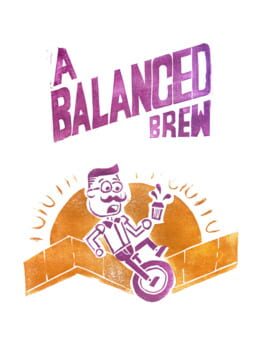
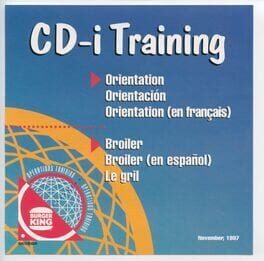

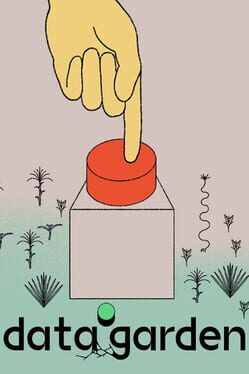
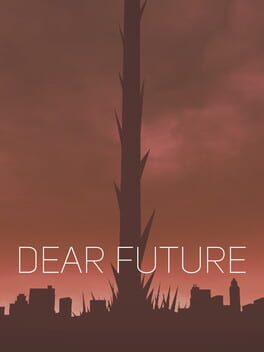
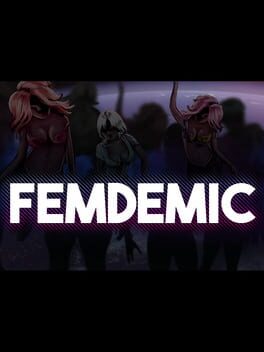
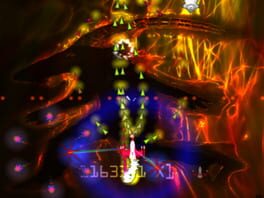


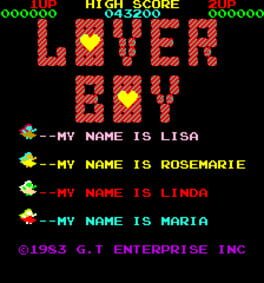
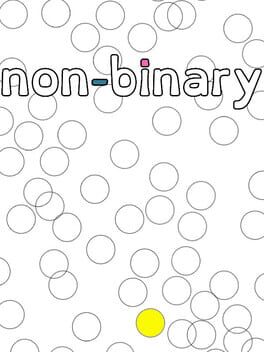

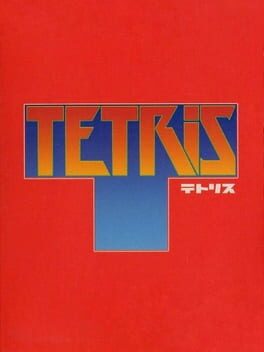
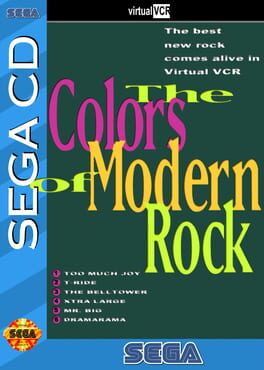
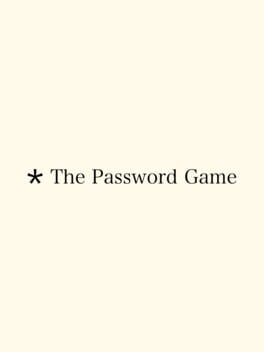
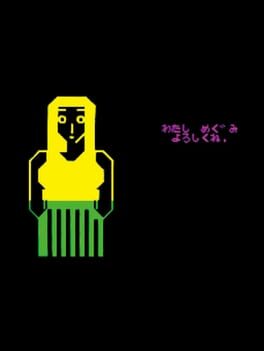
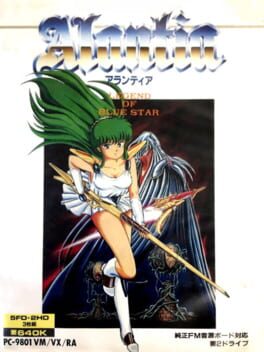
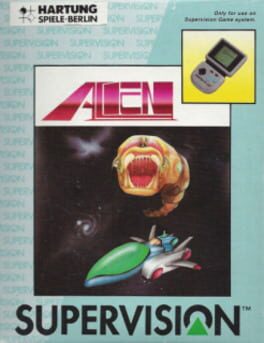

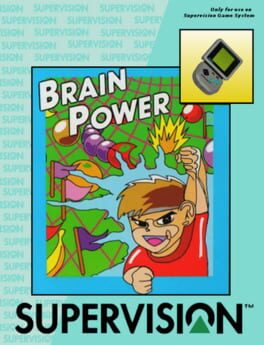
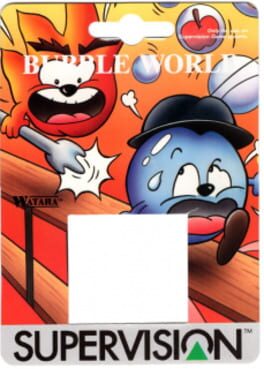

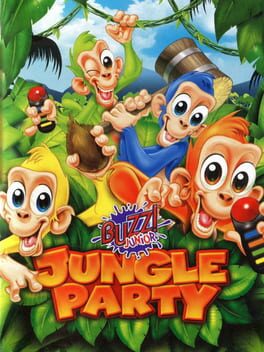


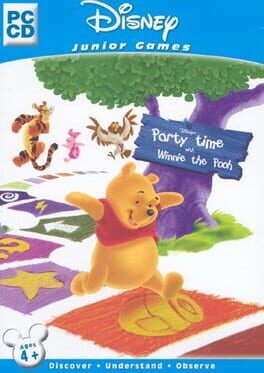
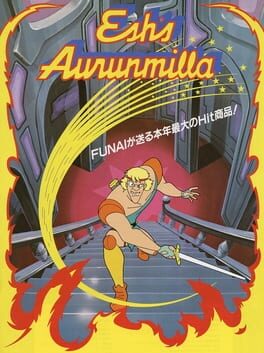
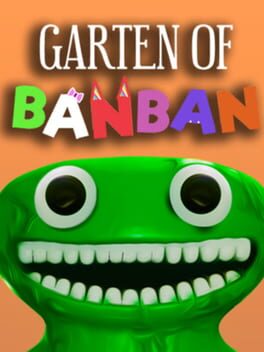
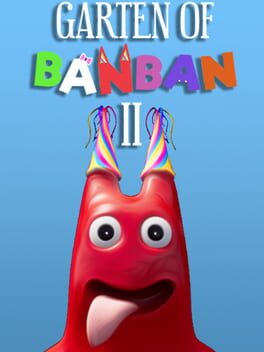
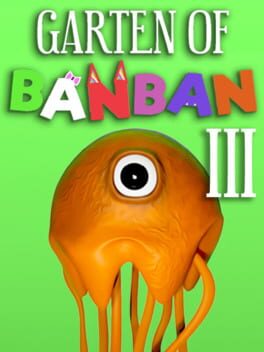
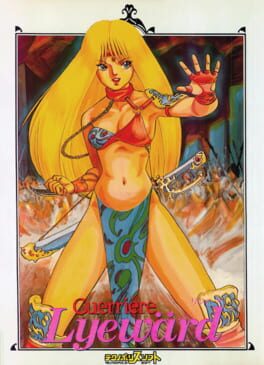
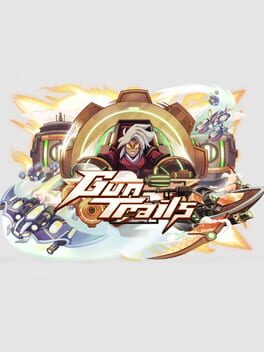

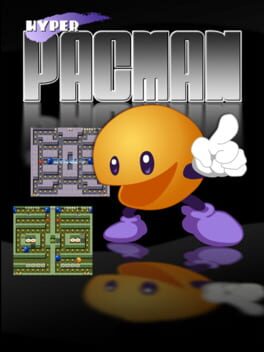


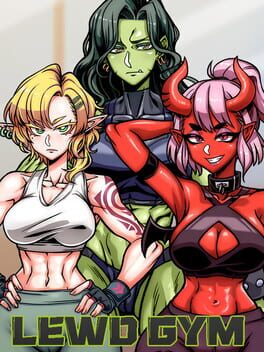
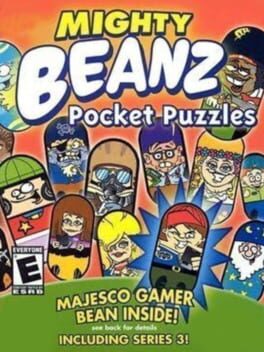

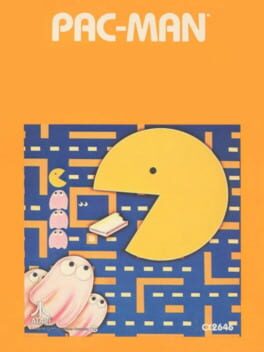
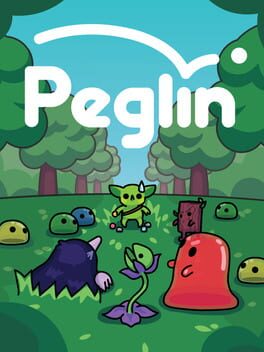

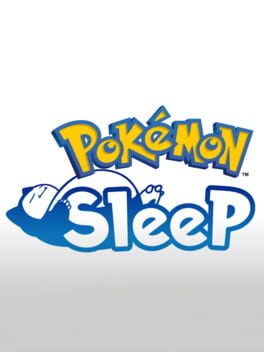
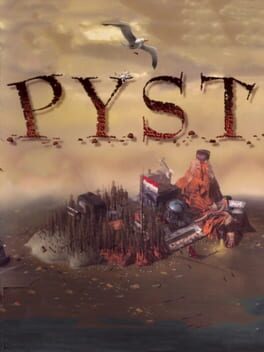

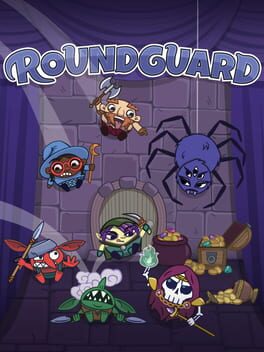



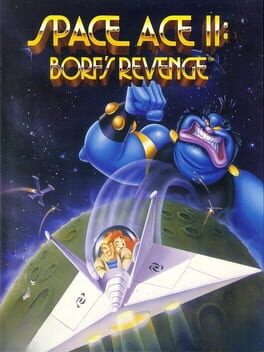
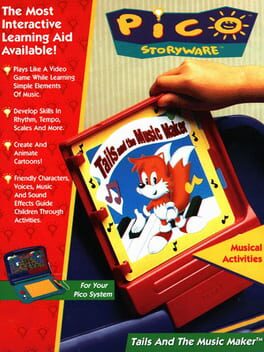
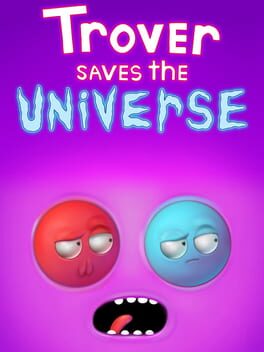
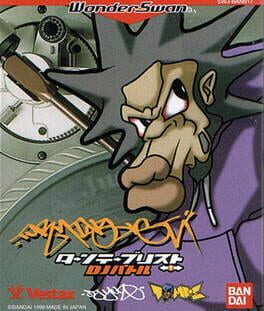
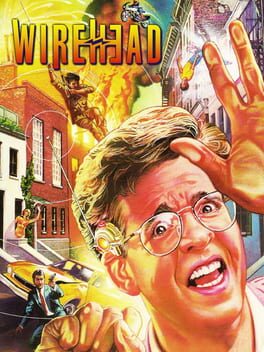
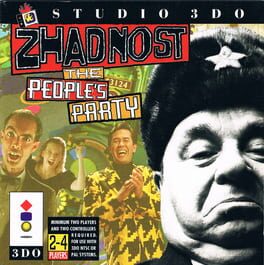

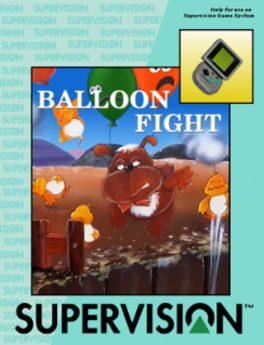
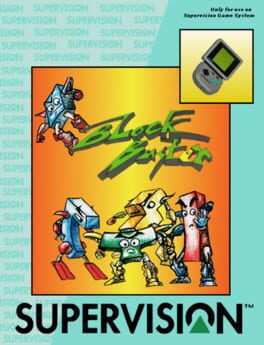
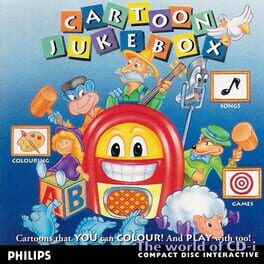
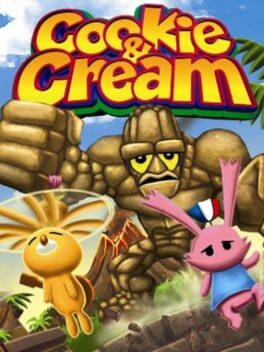
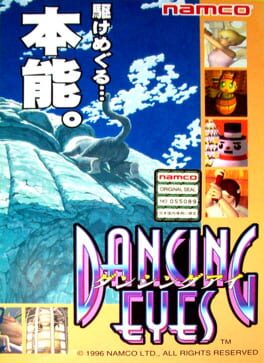
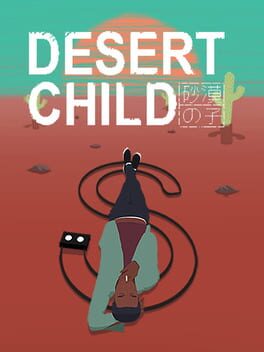
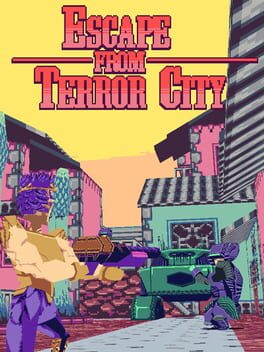
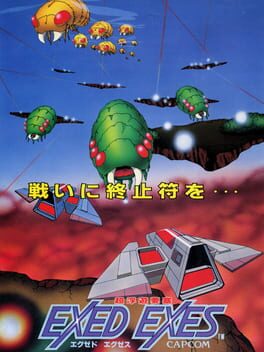




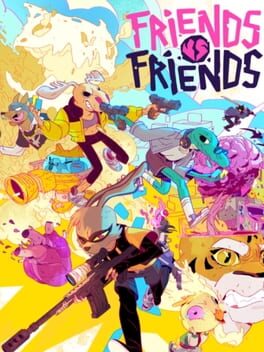
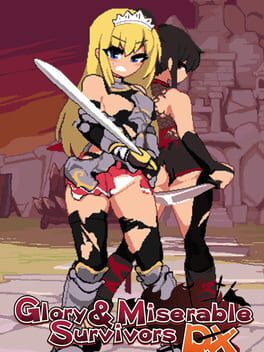
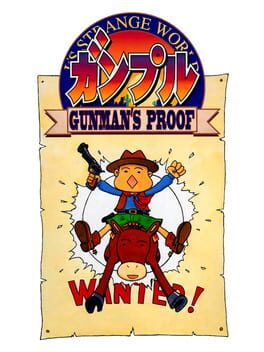
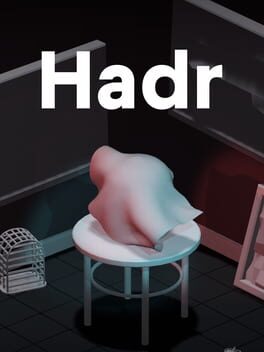


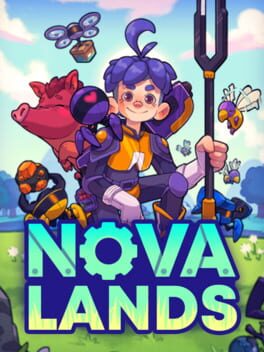
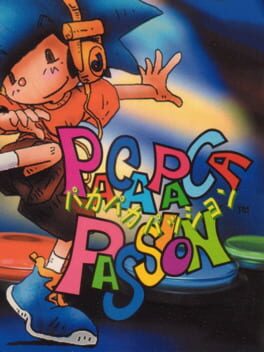

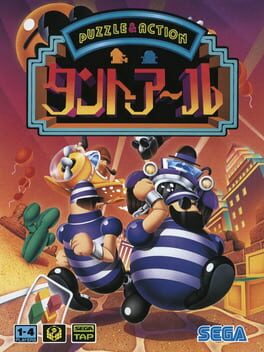
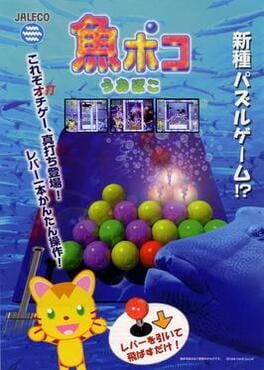

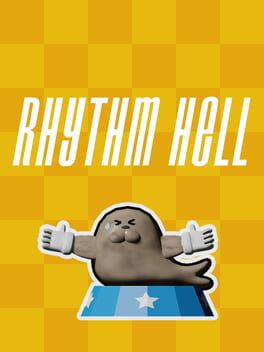
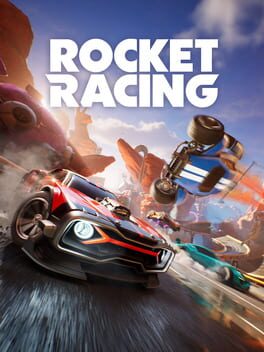

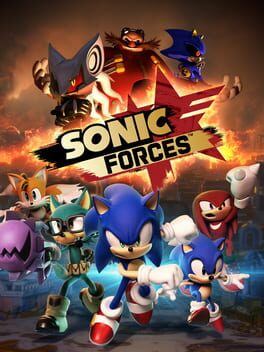

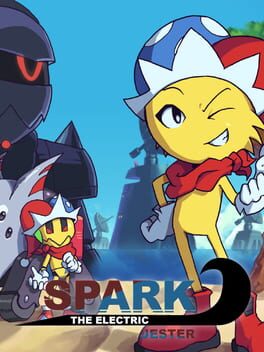



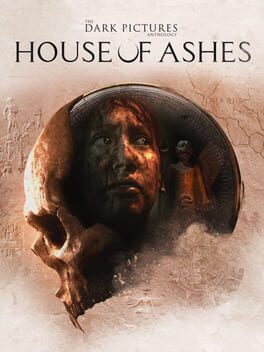
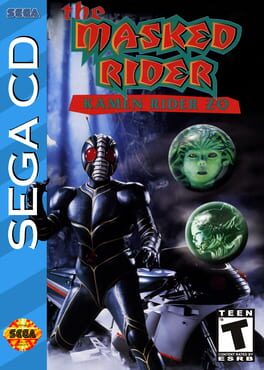
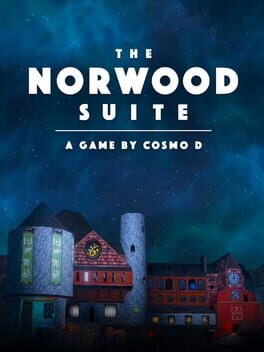
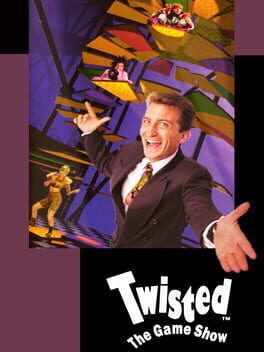
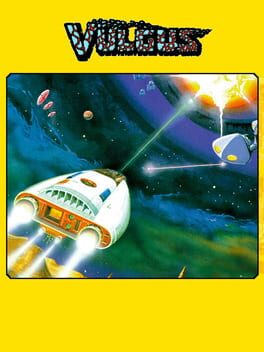
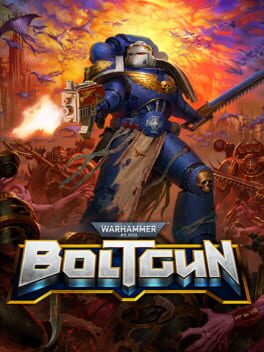



DeemonAndGames
5 months ago
For real tho I'm so glad you made this, I didn't even know you made a follow up to your 177 review so early in the year until I just saw it here, same things goes for a ton of reviews I hadn't checked out till now. Amazing year full of amazing reviews, that's something that I could say about a ton of the talented people on here (which is a lot) but your works are always a fantastic read and an inspiration for me and I'm sure also for many others. Excellent work!